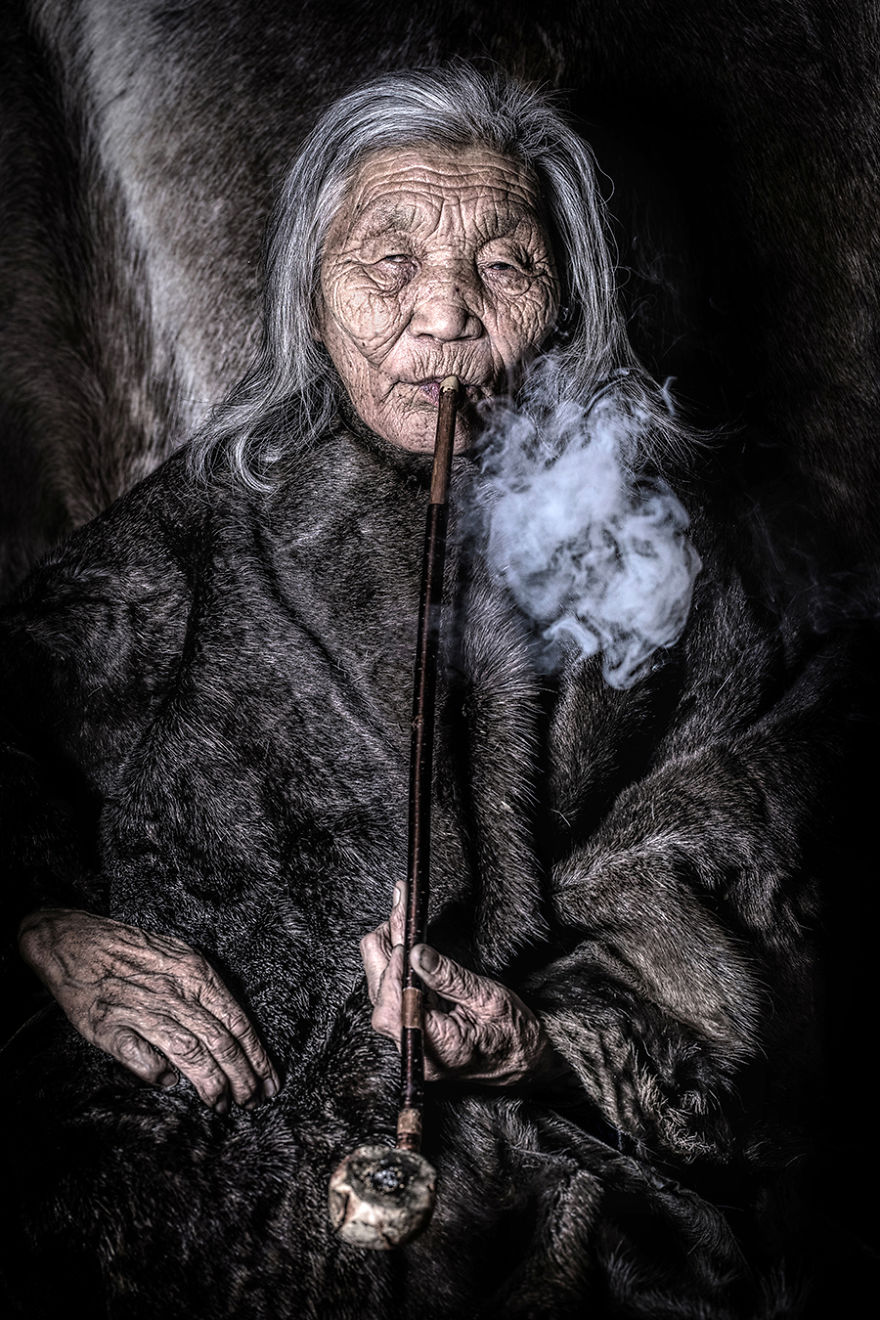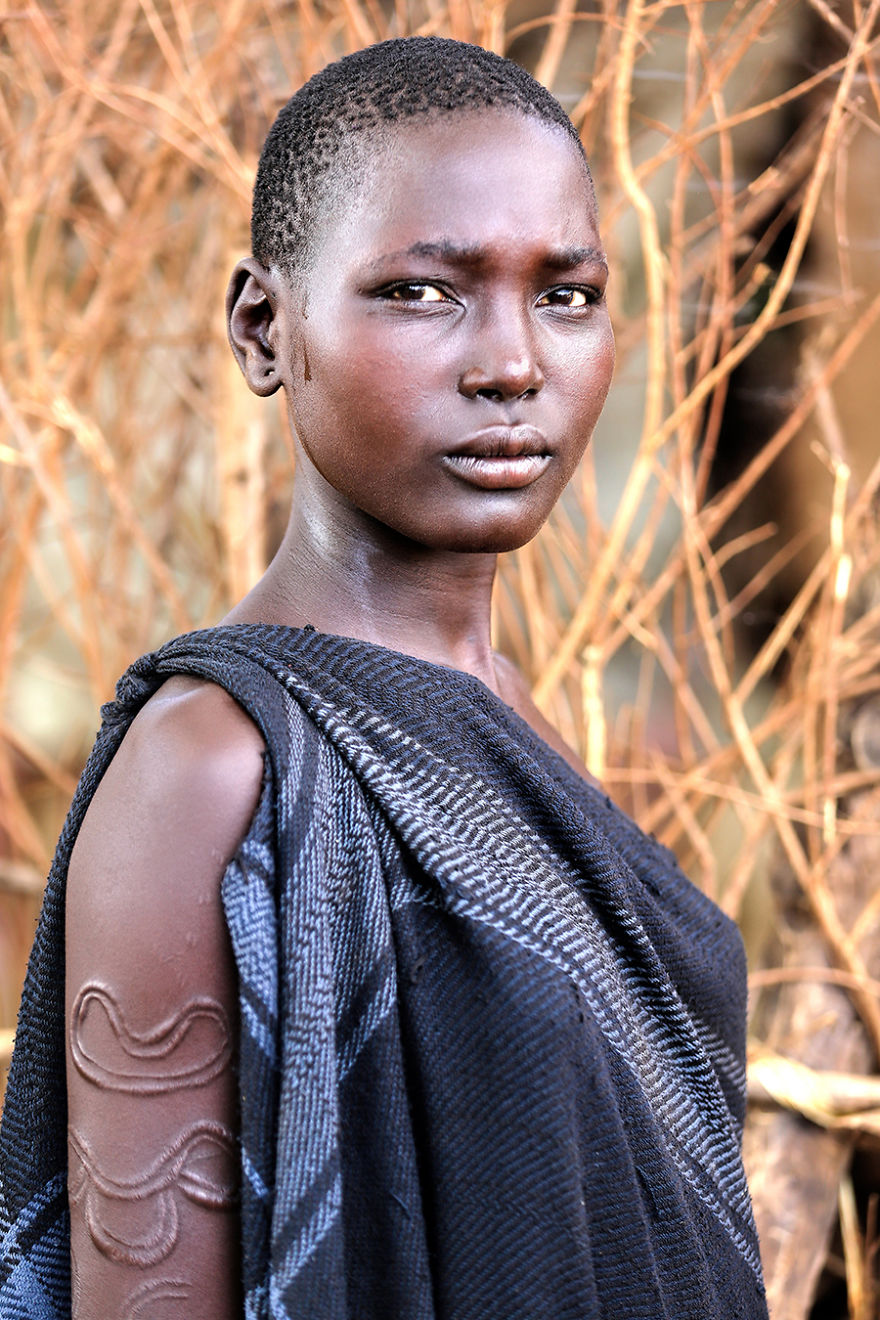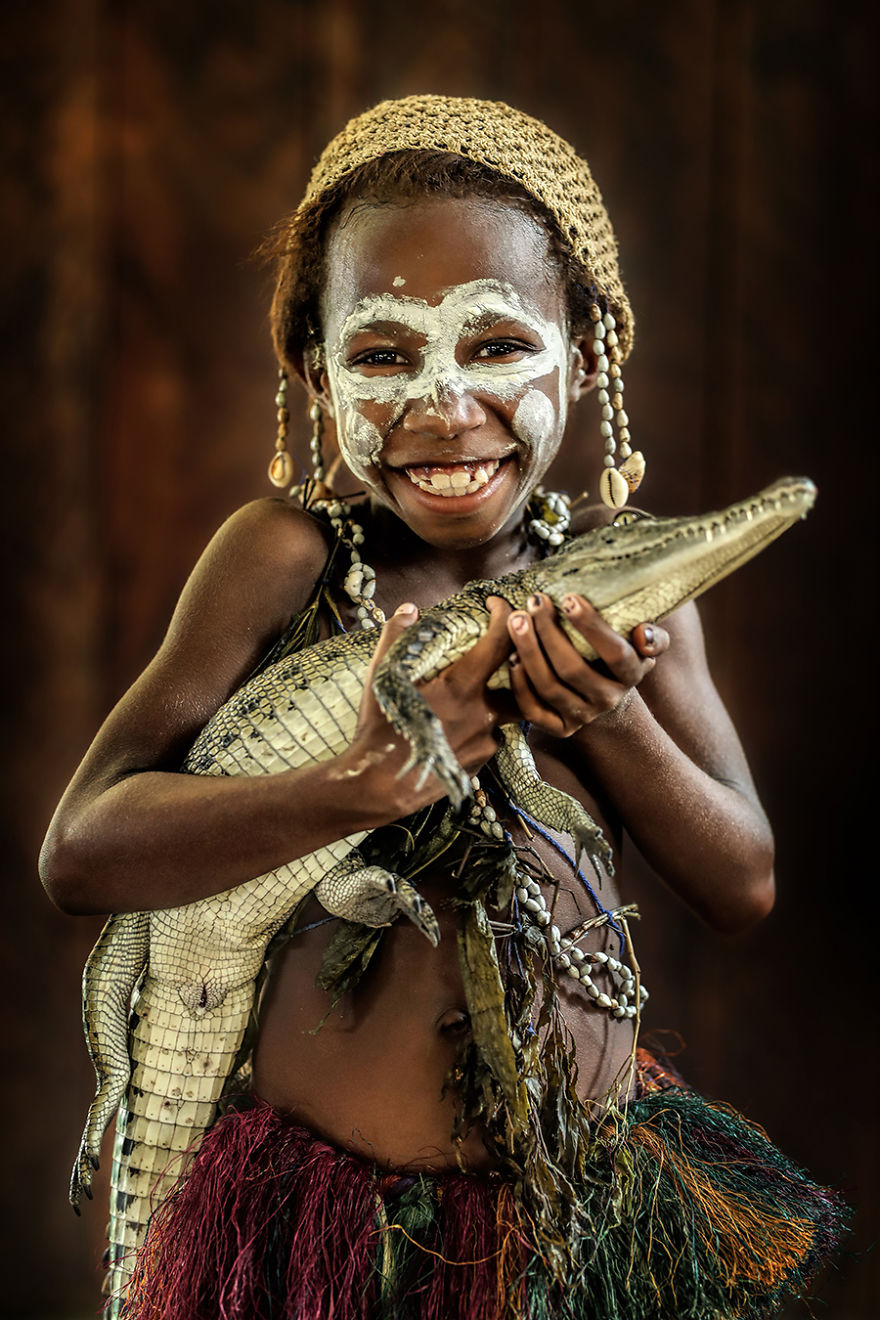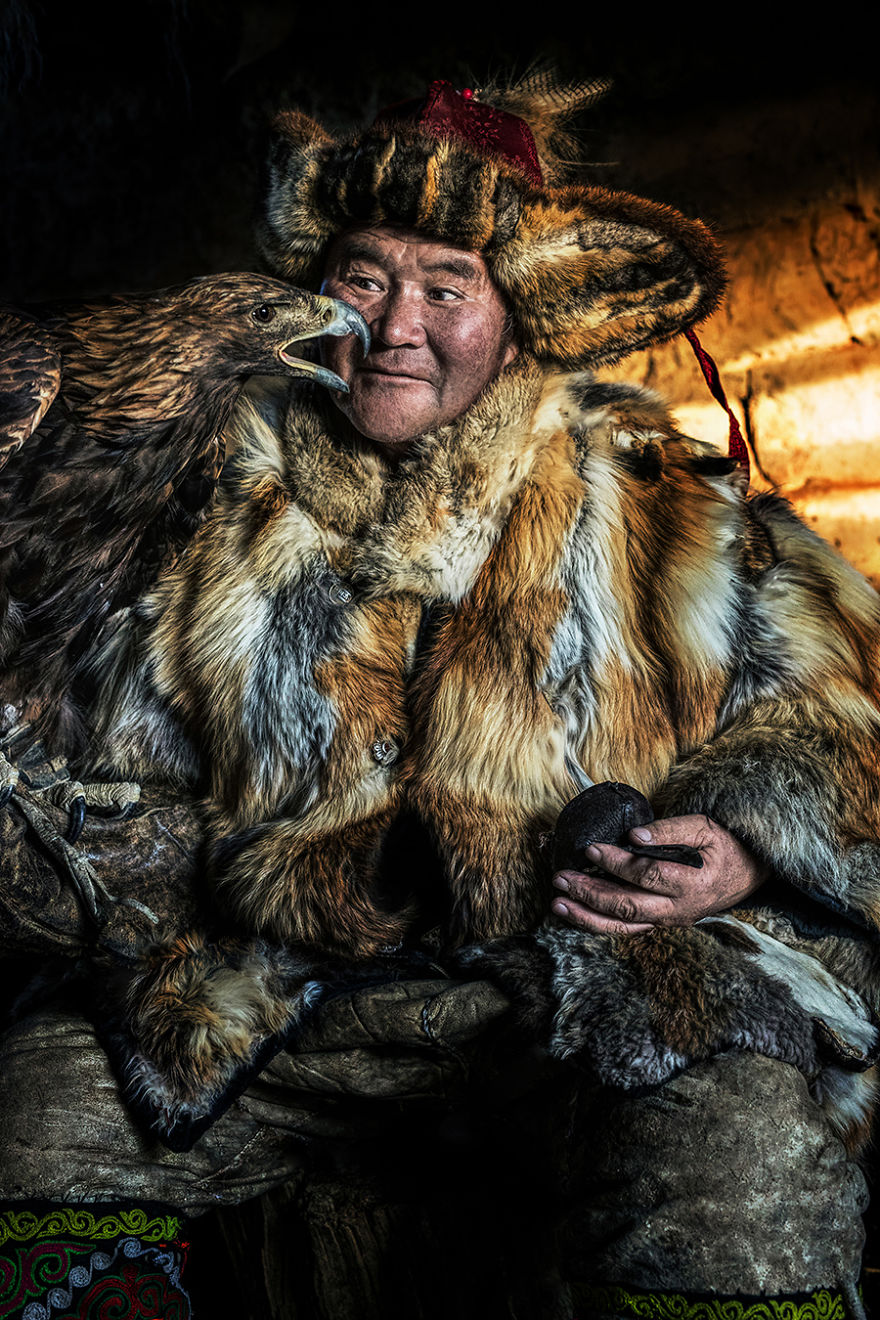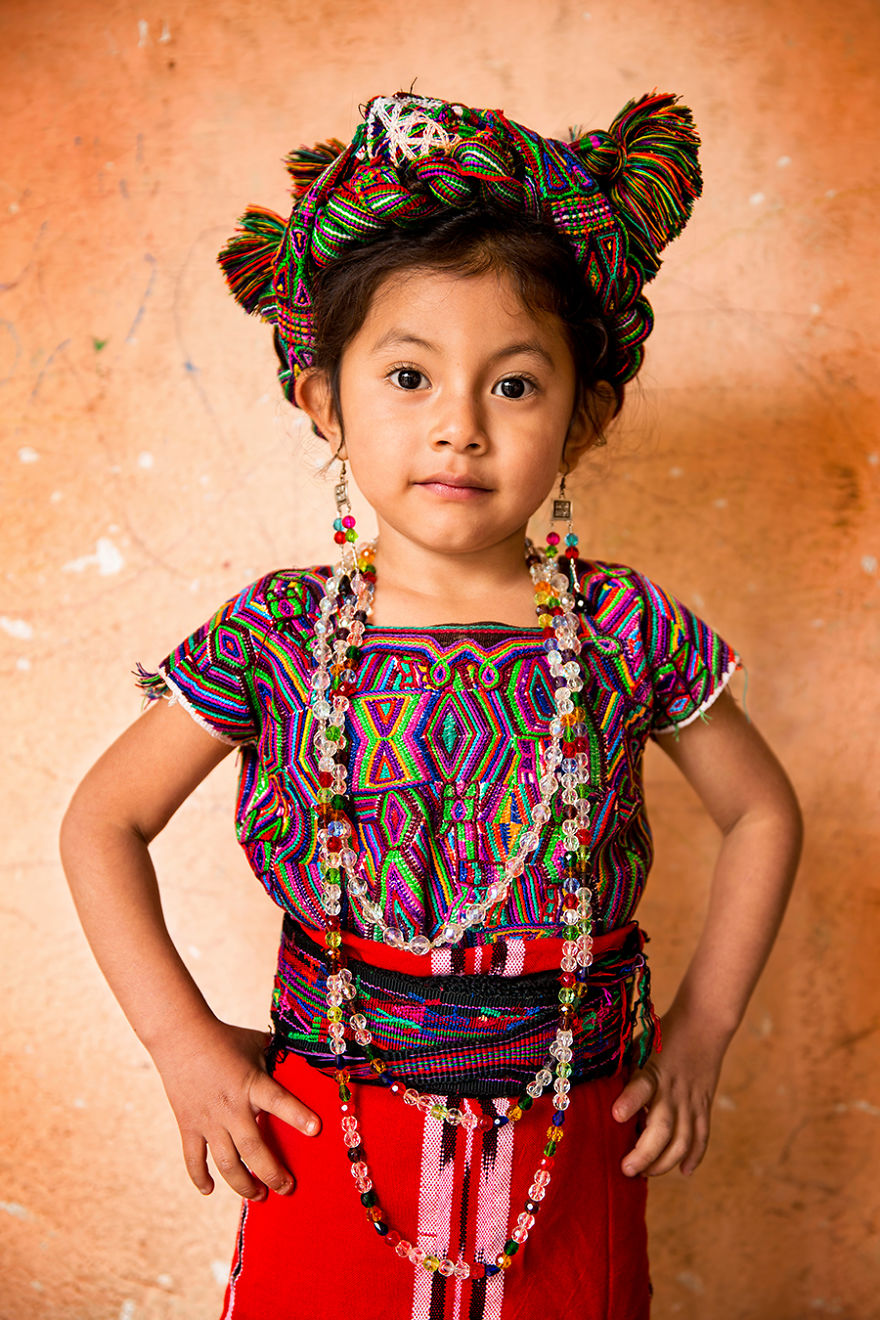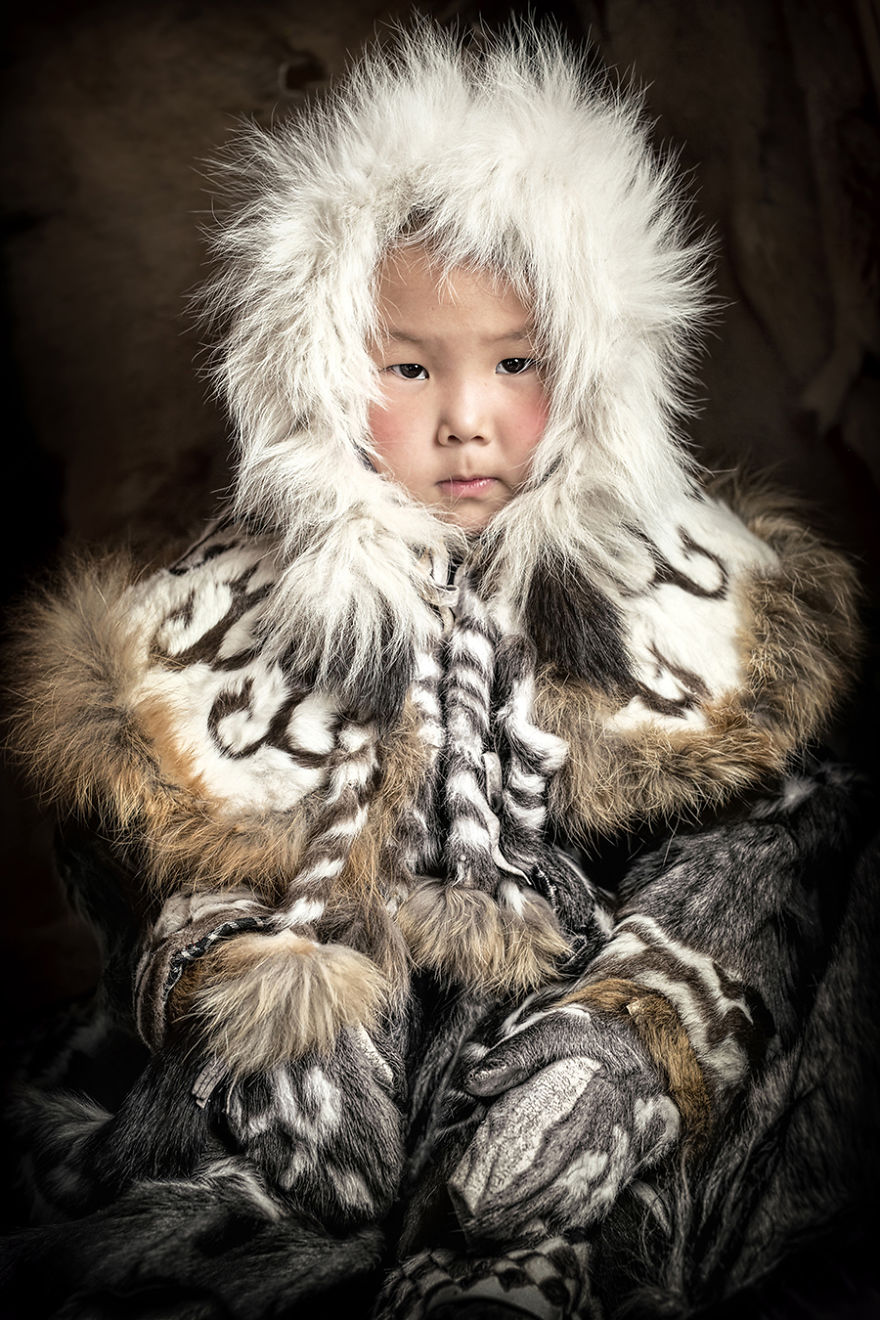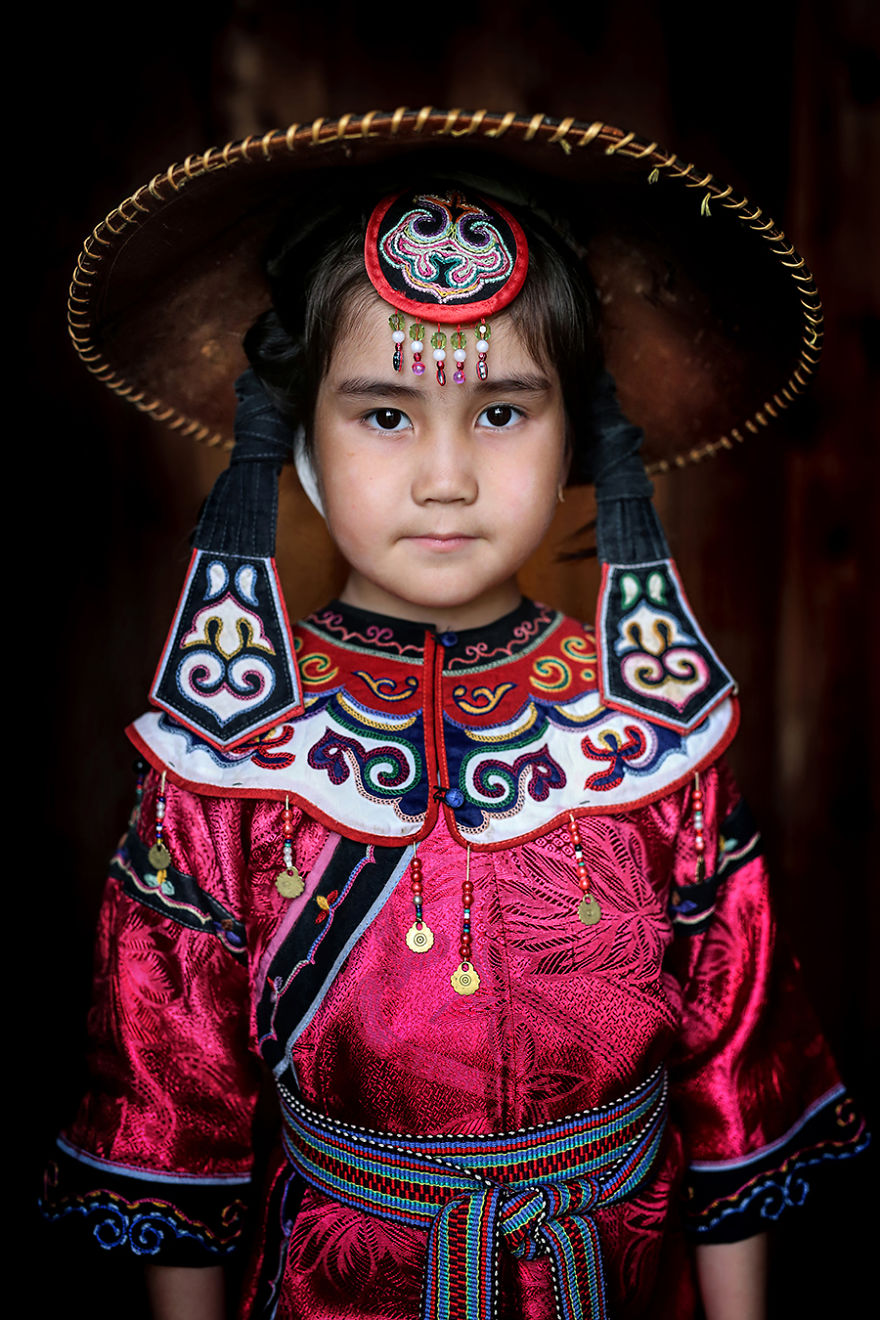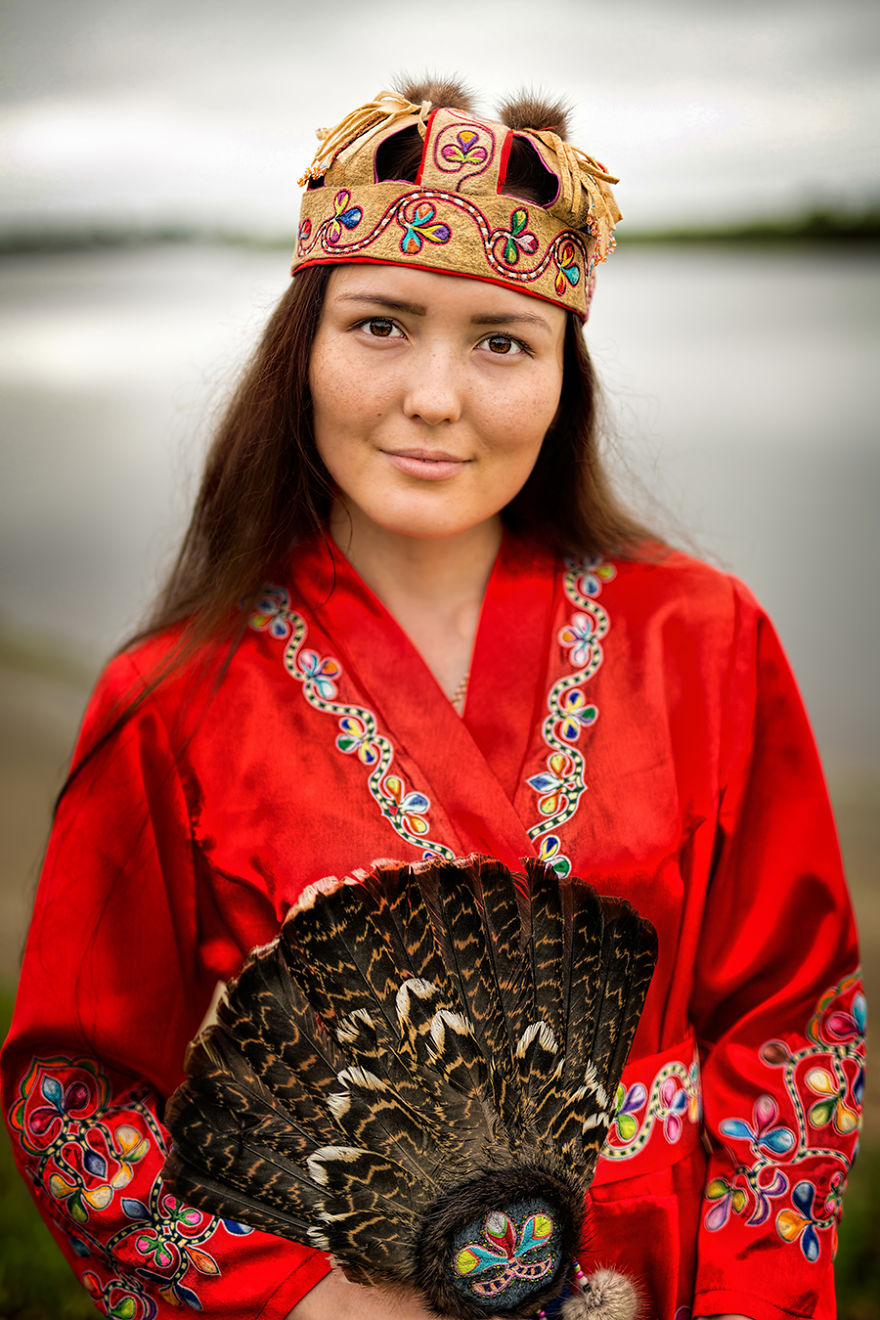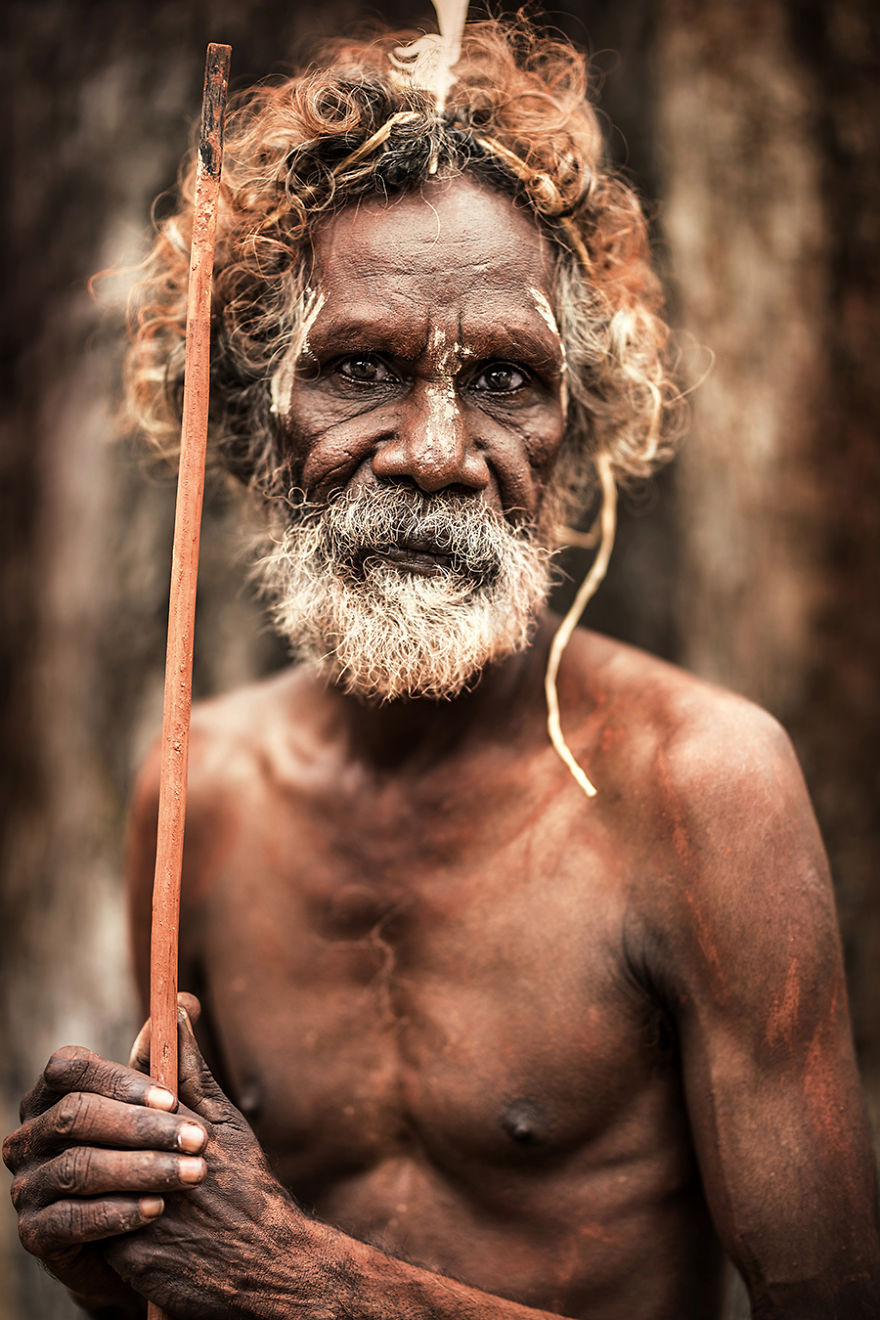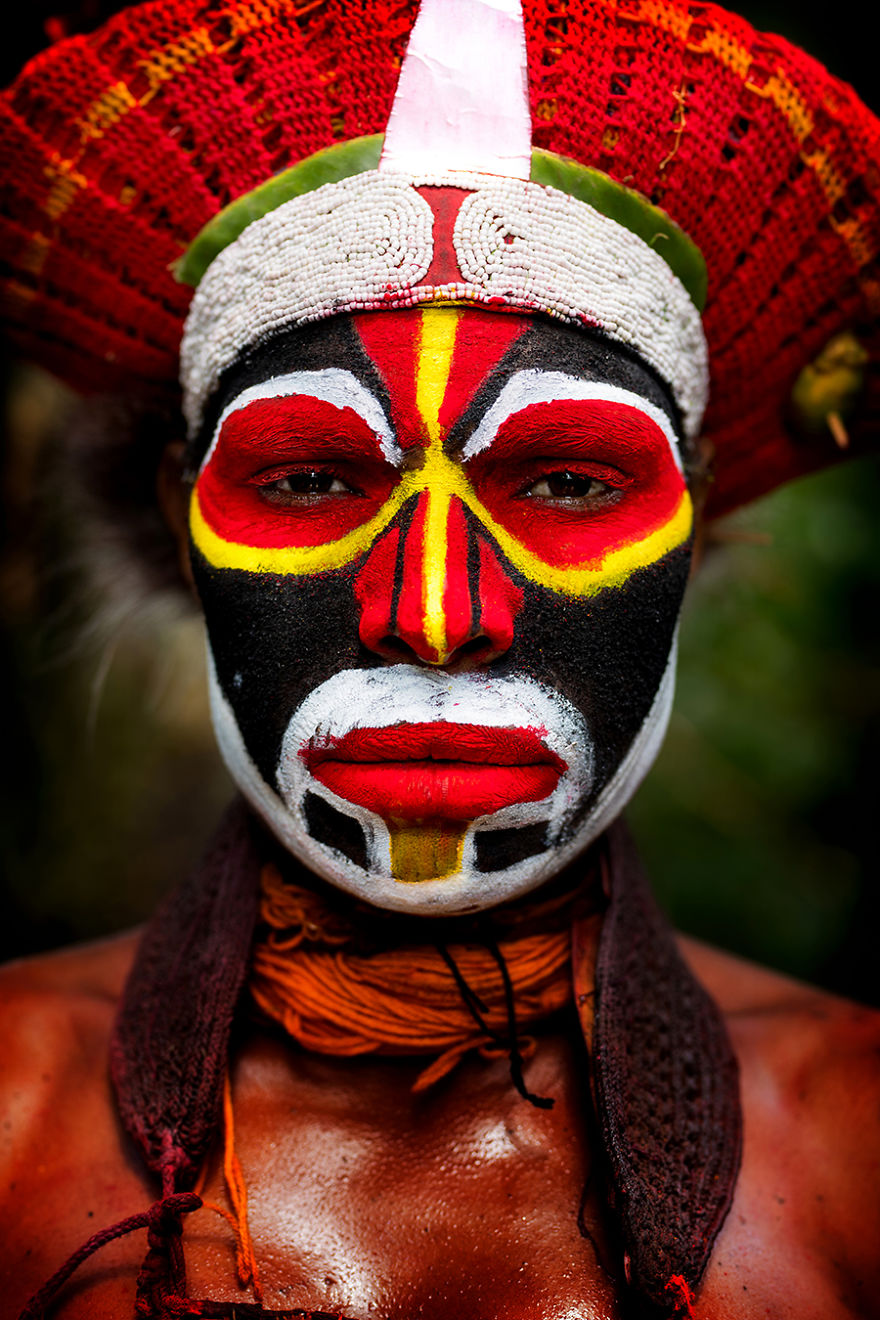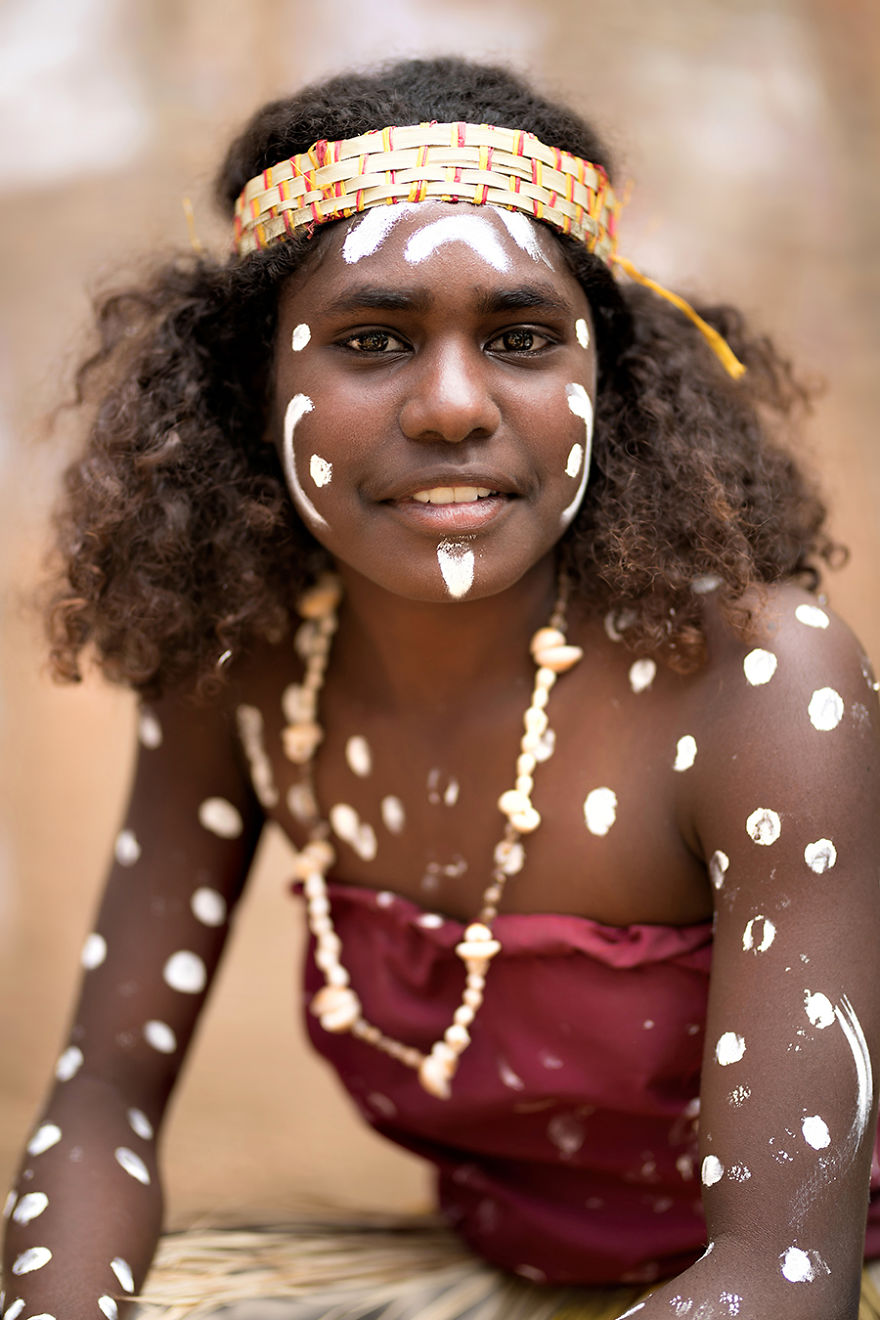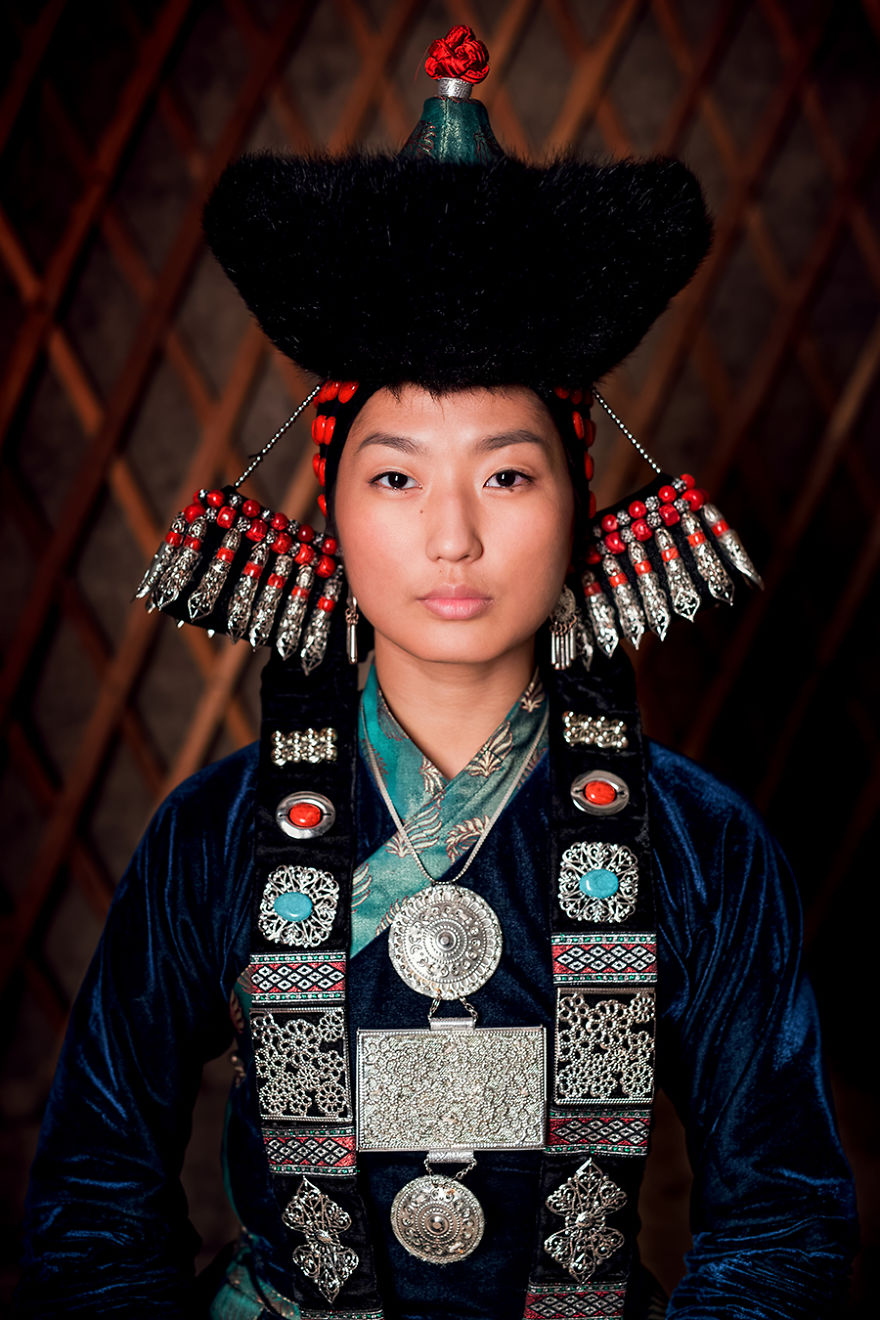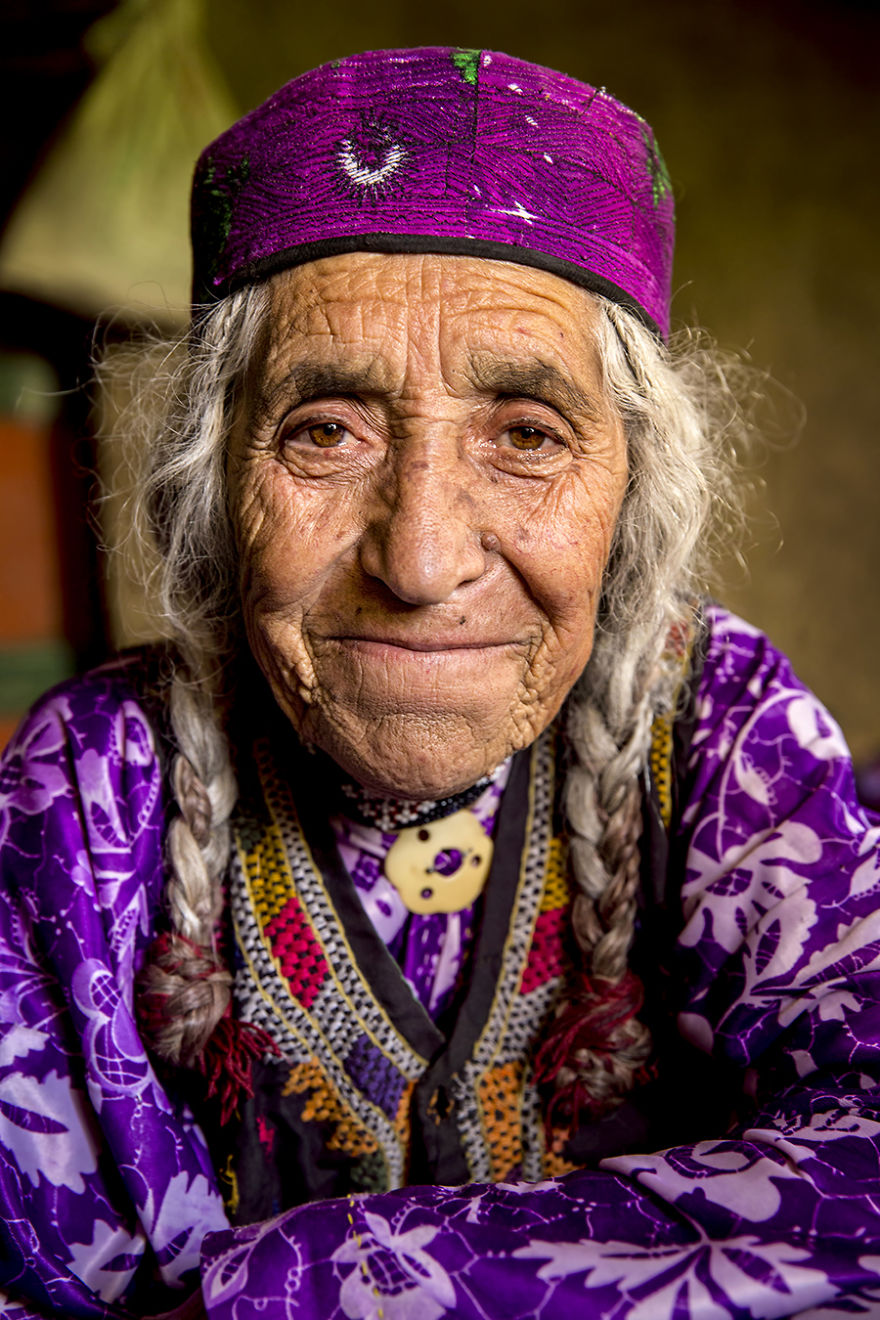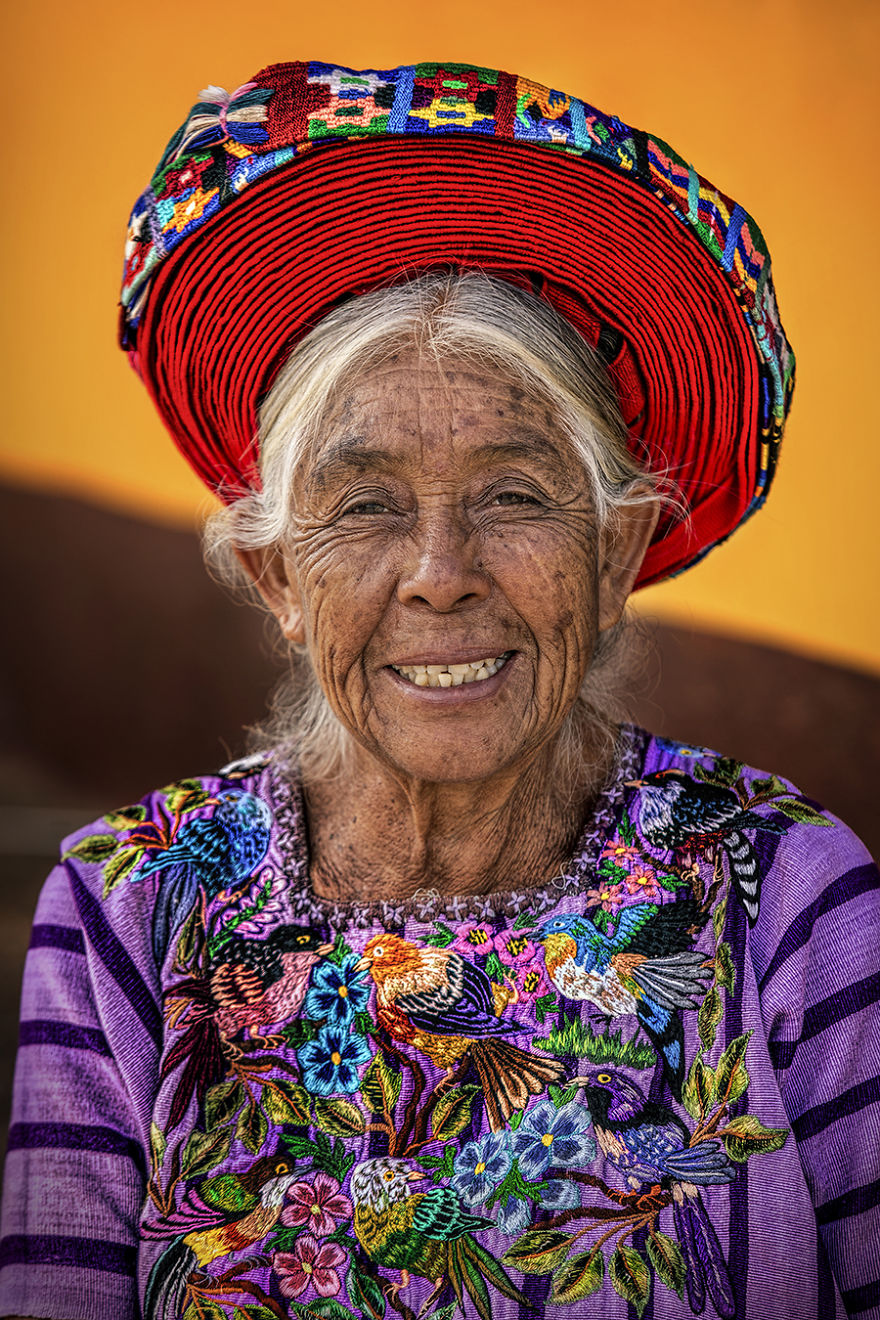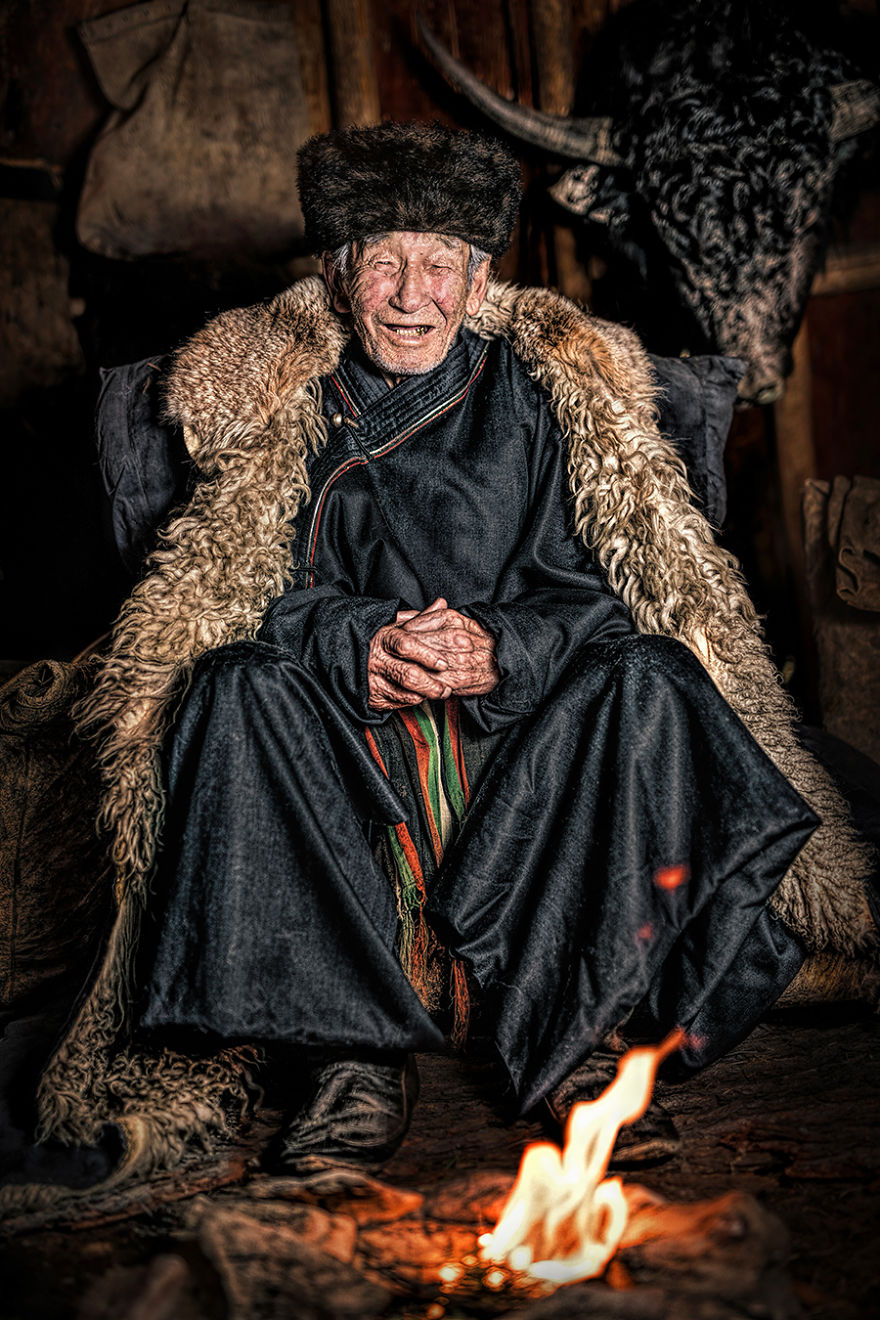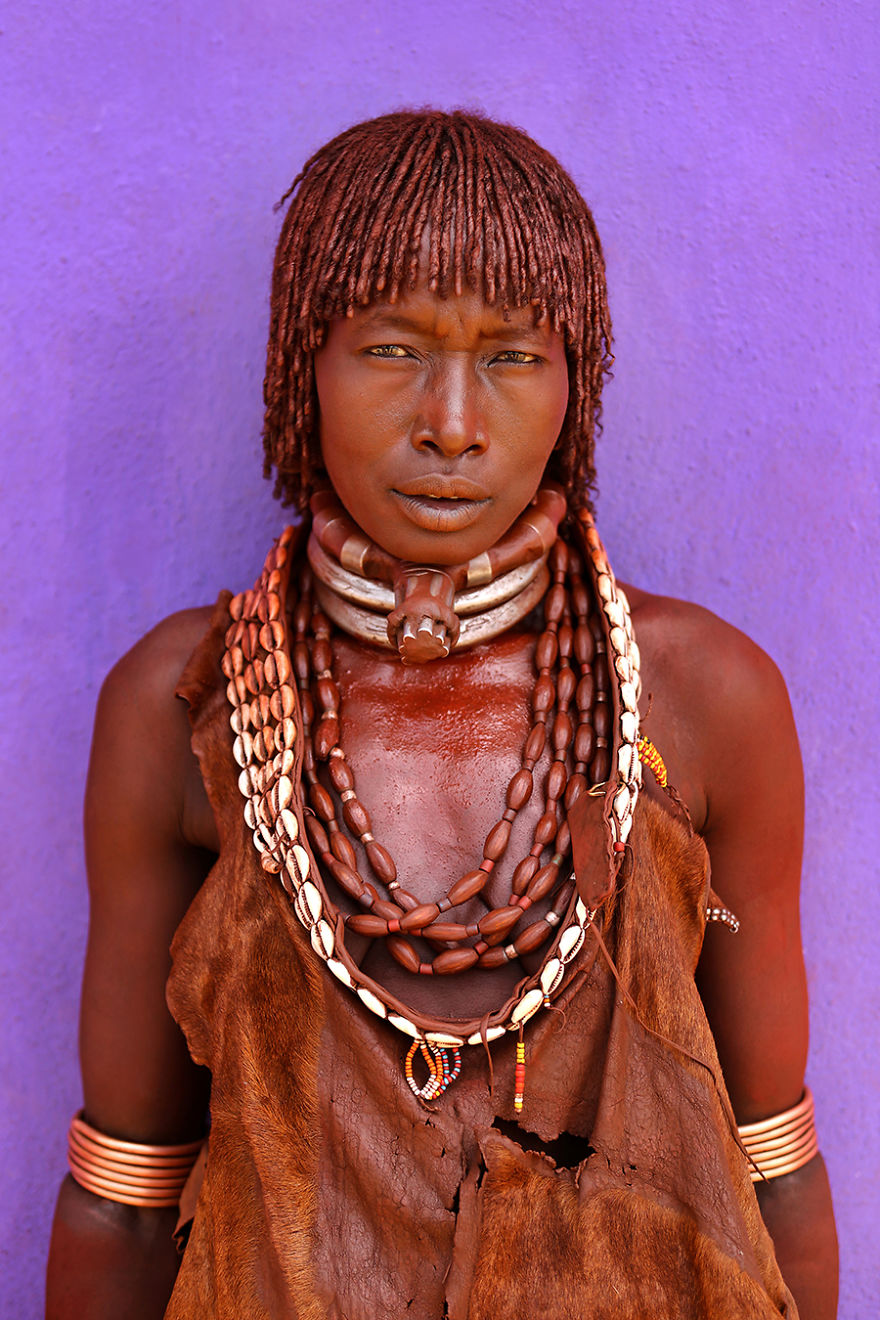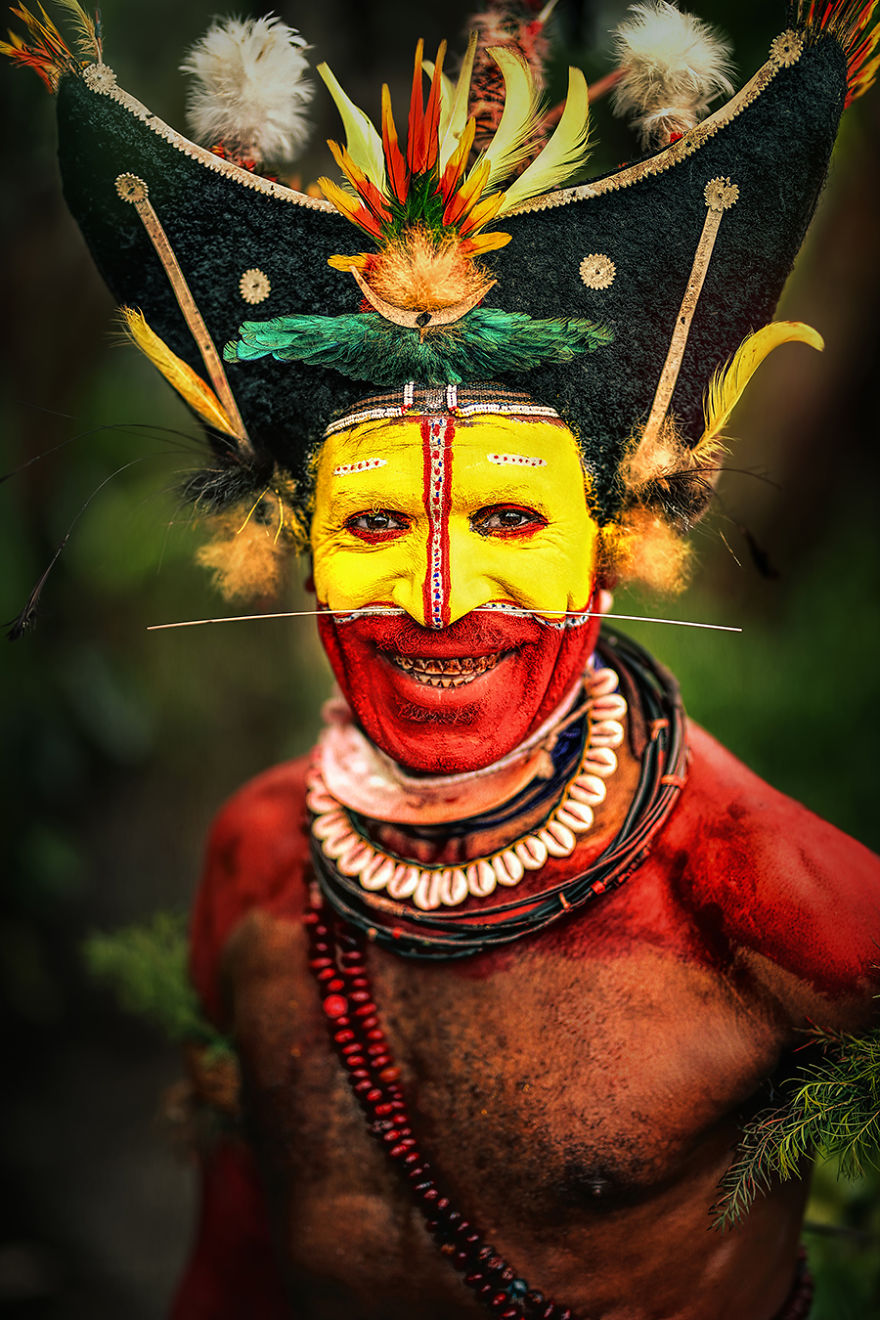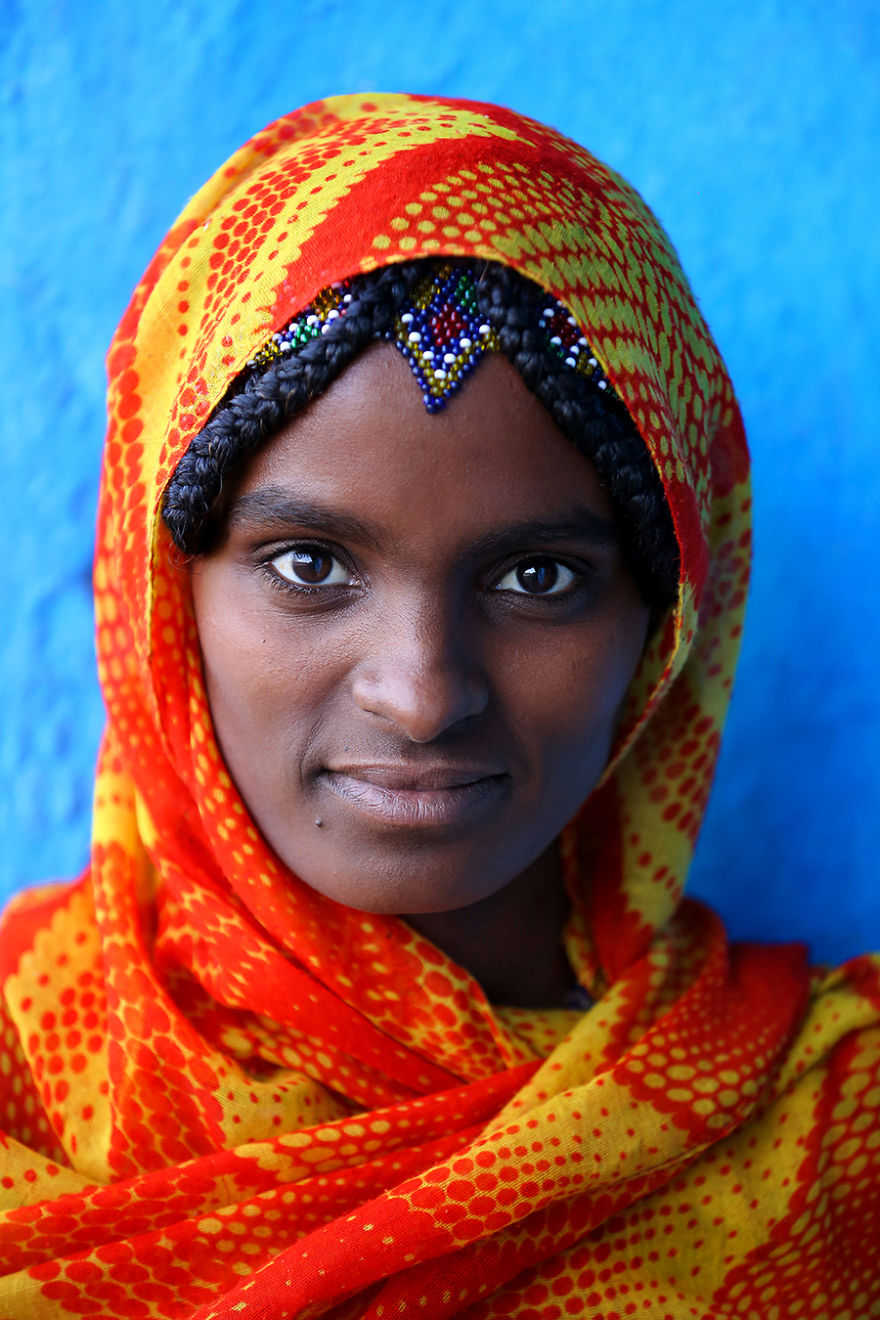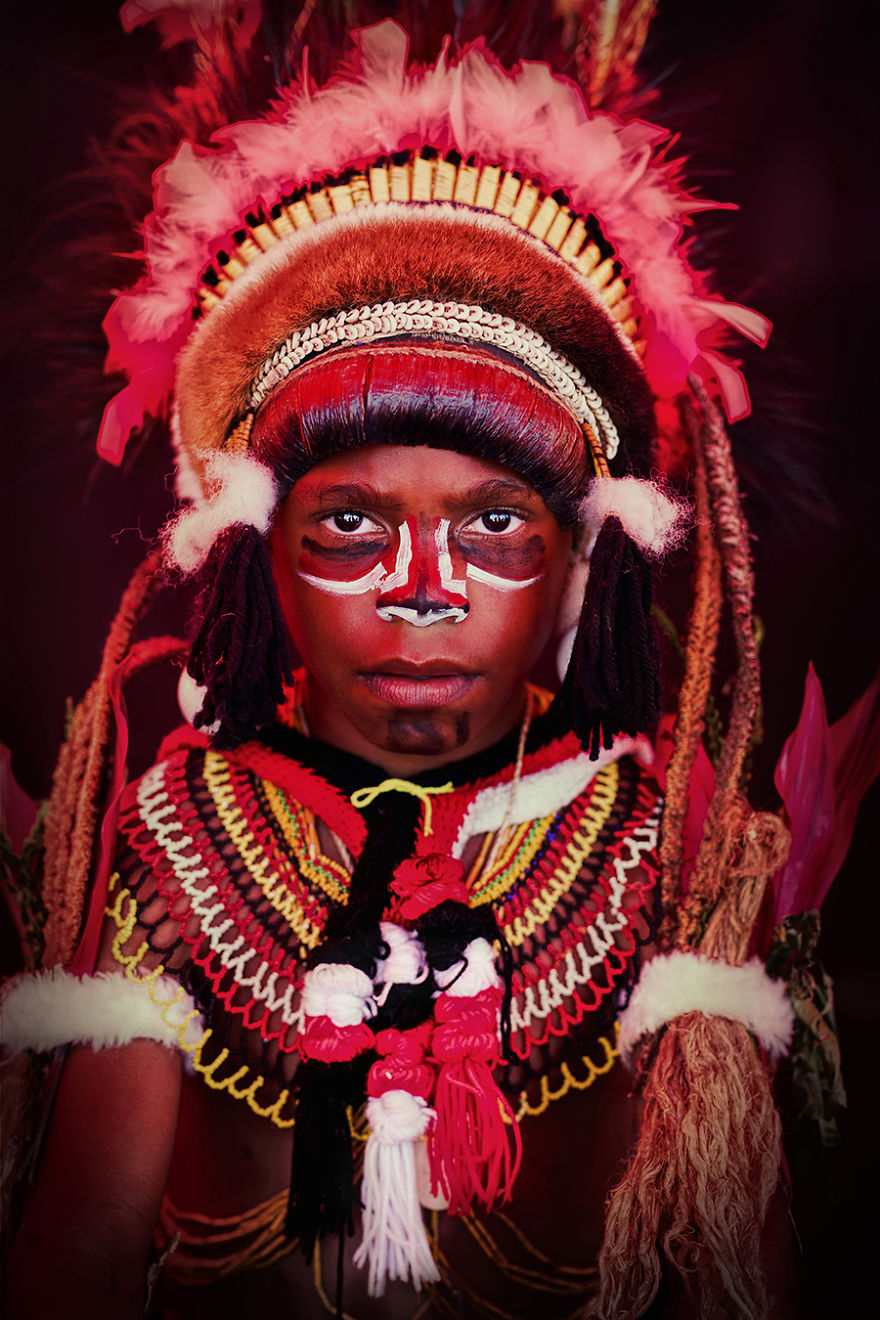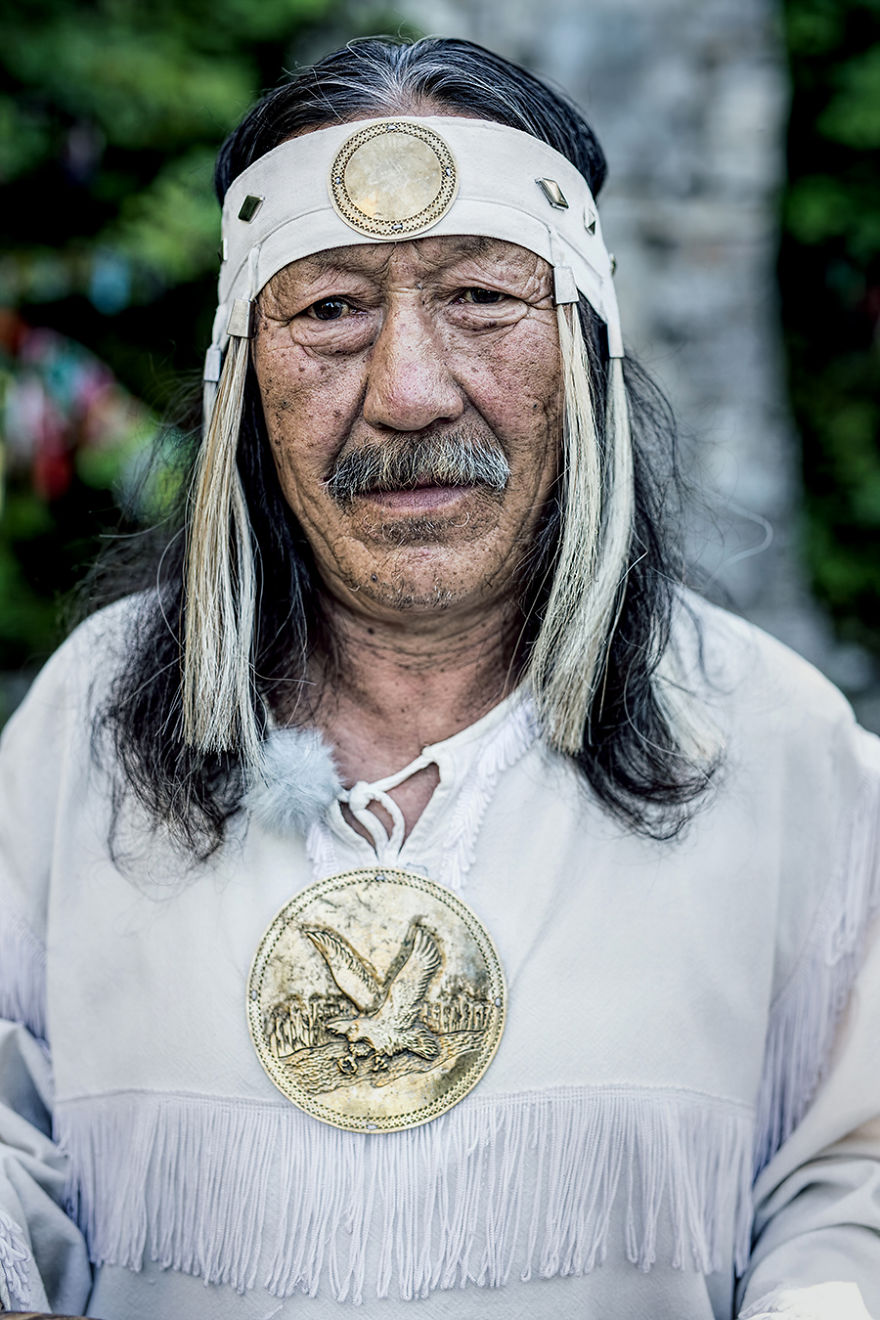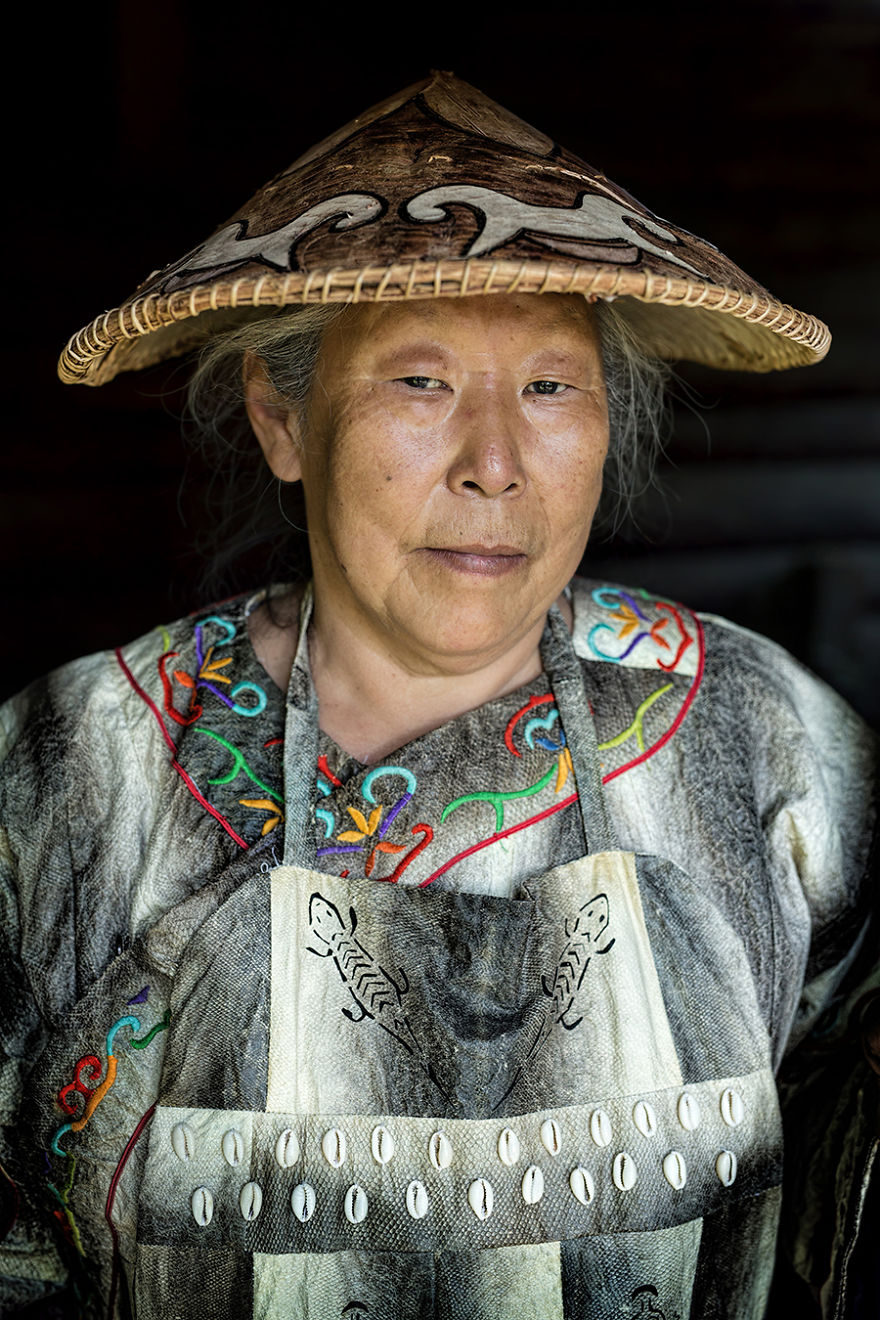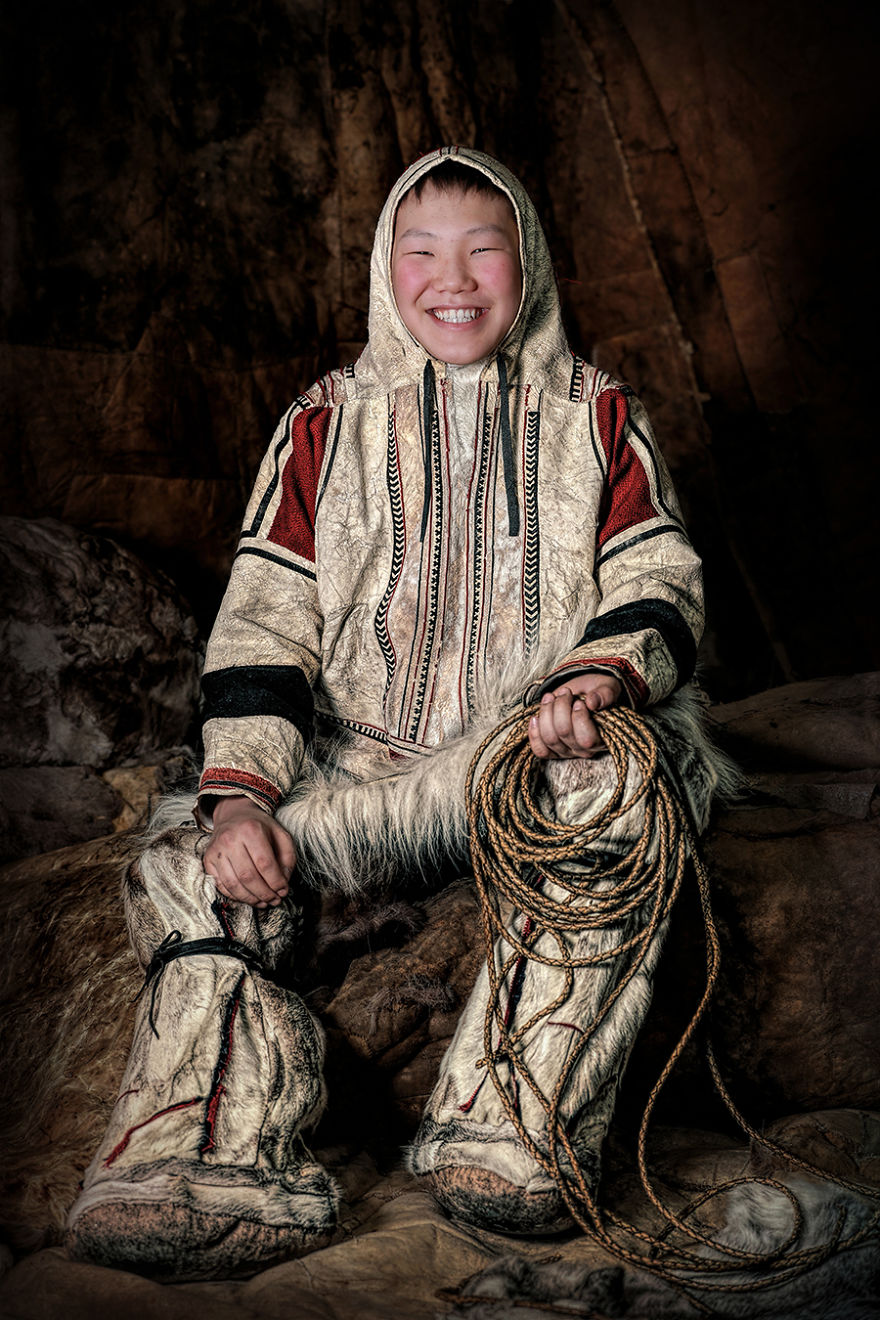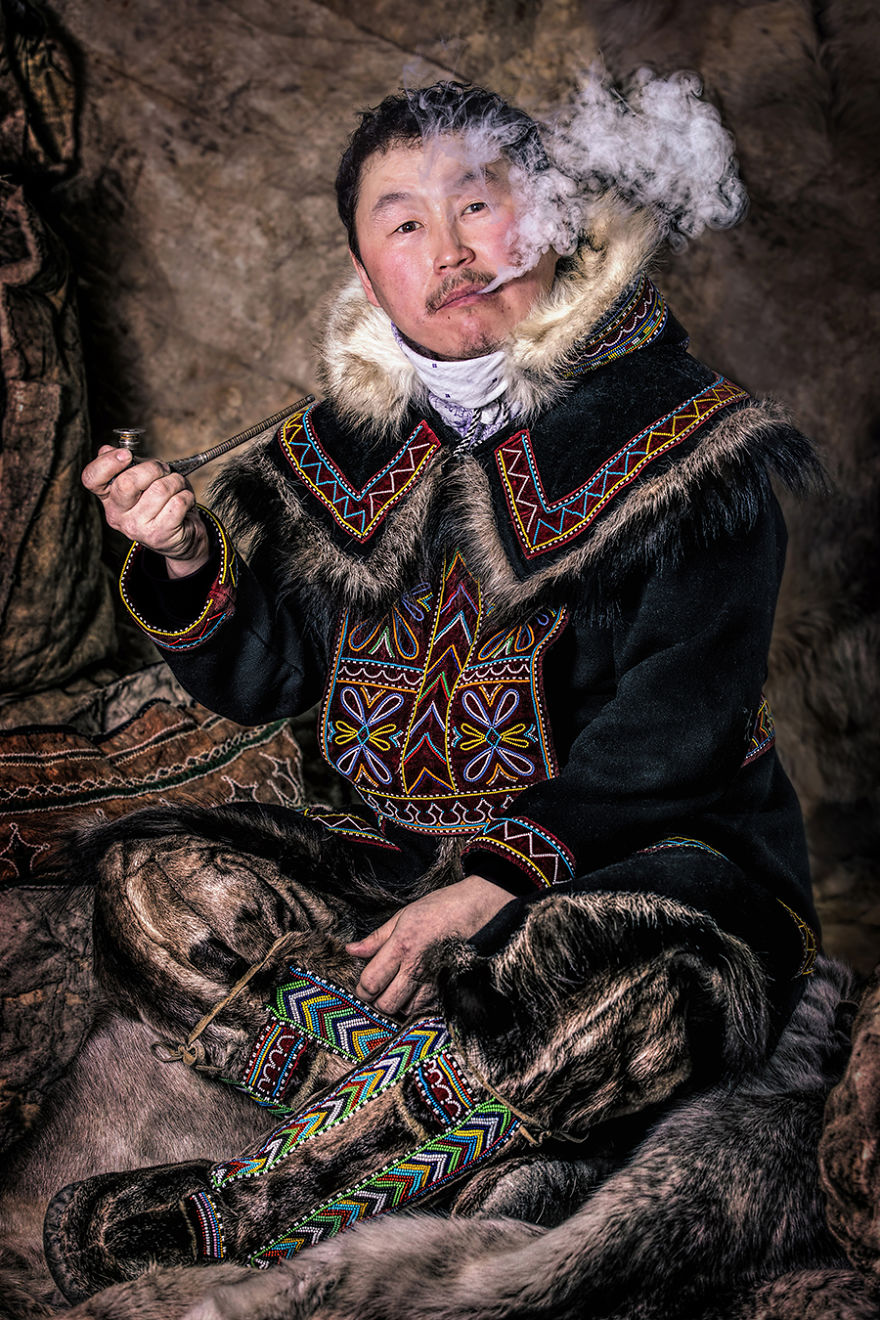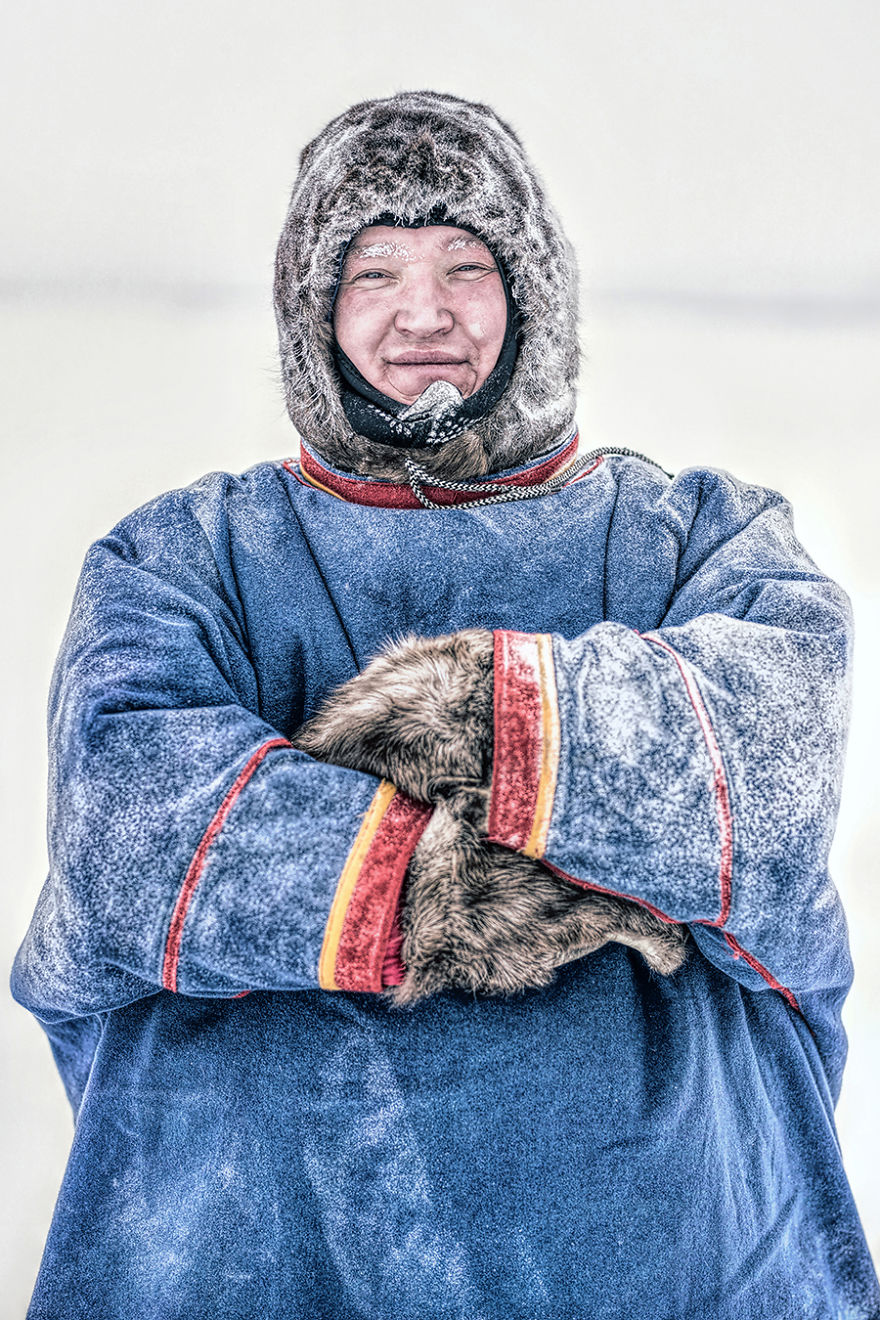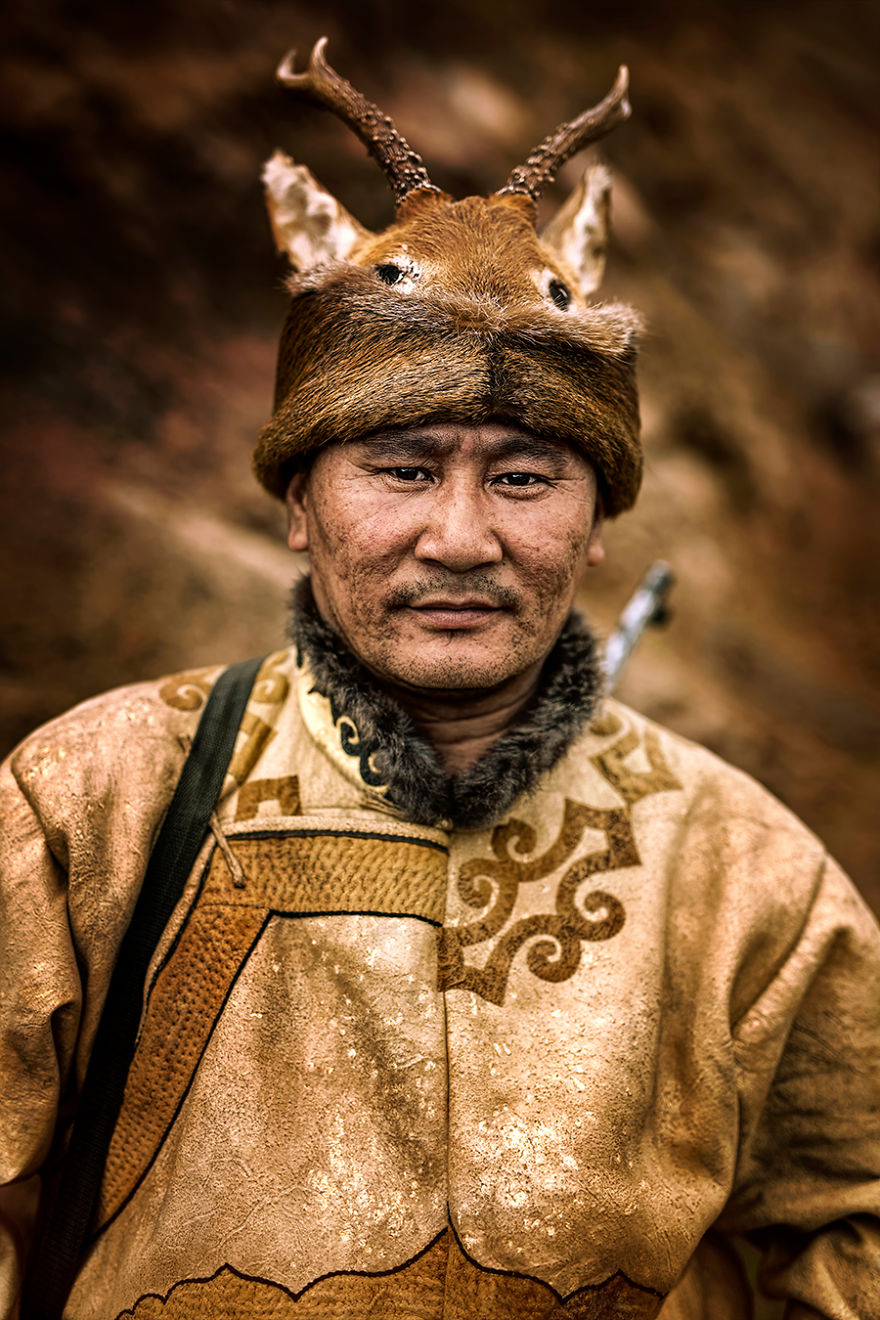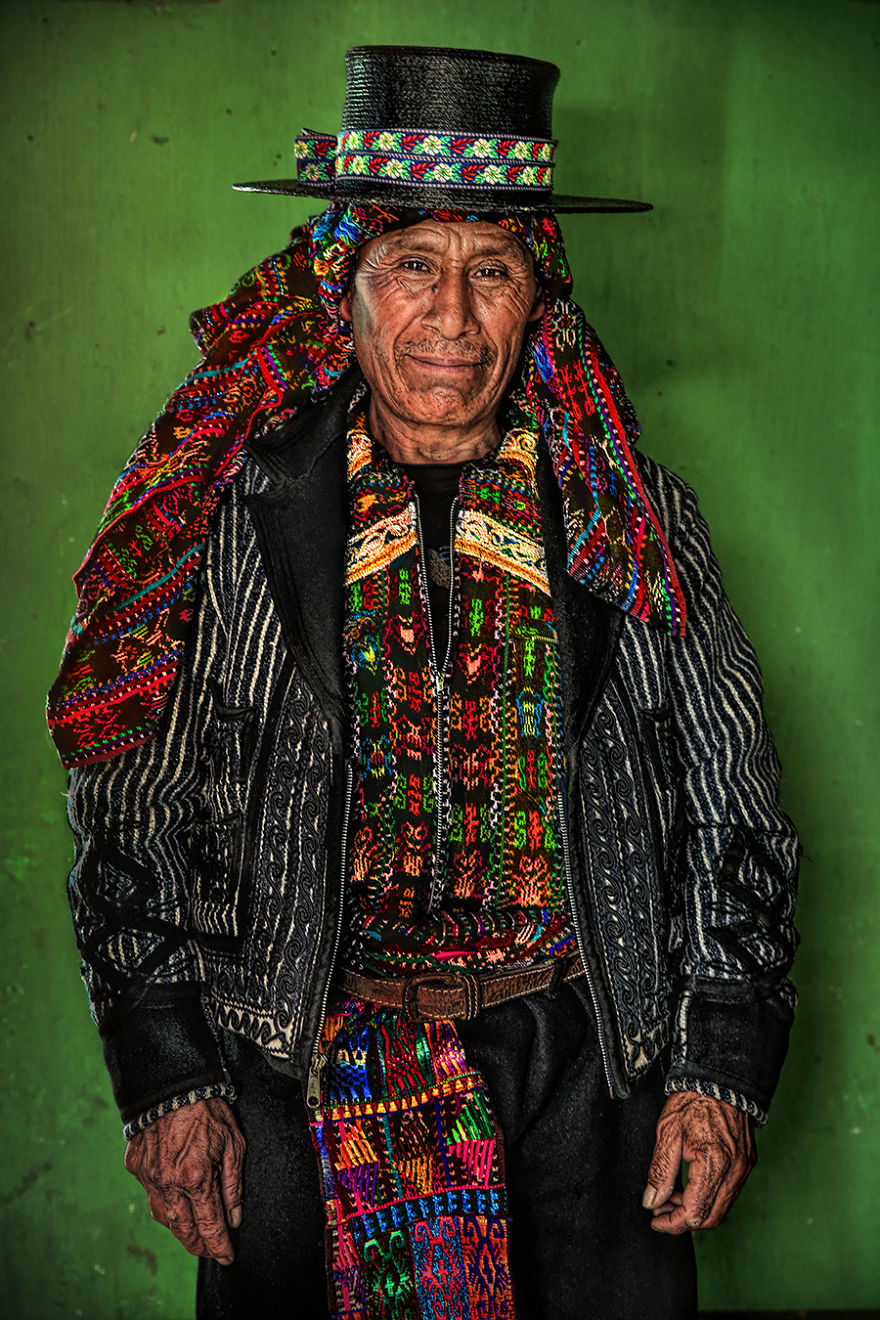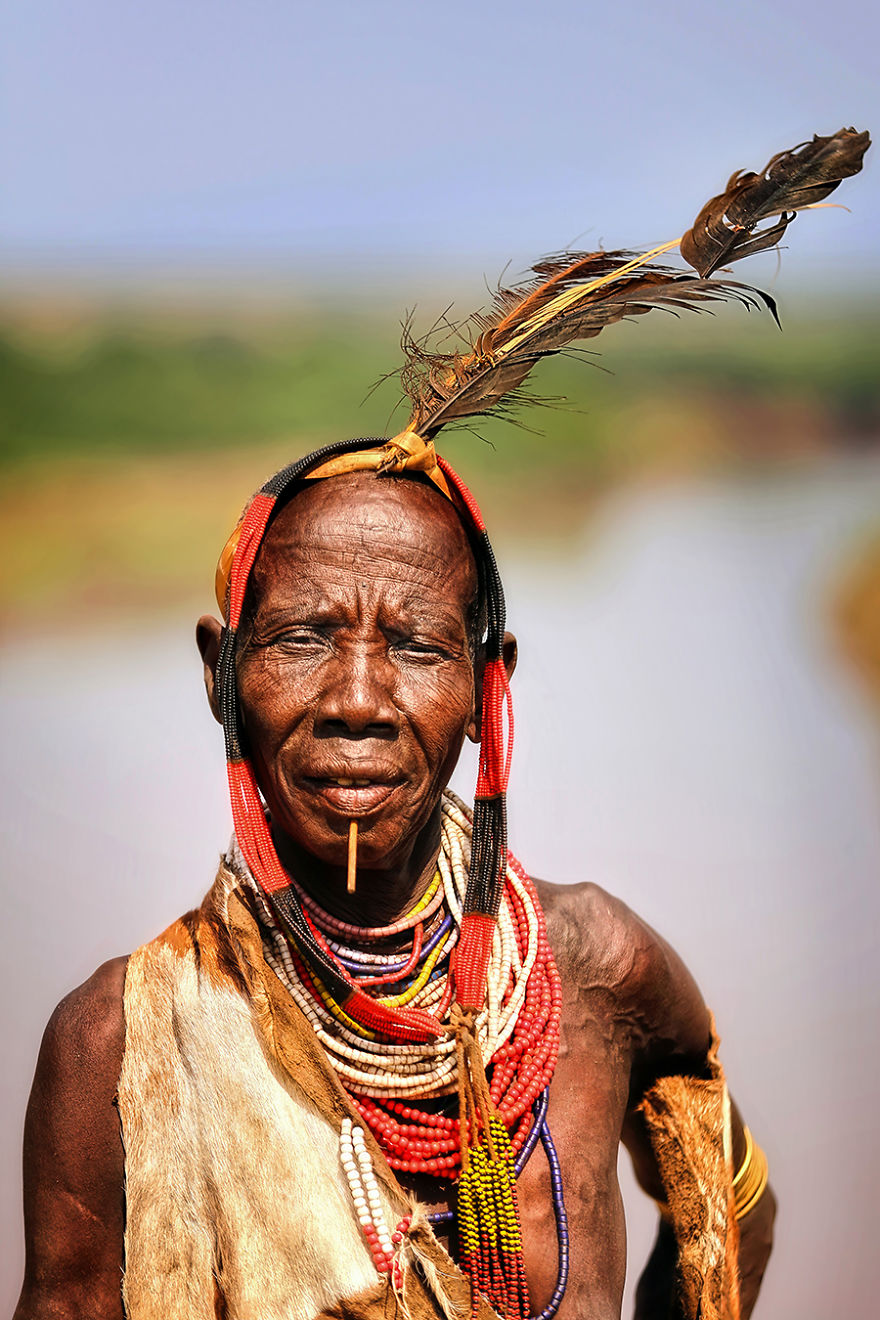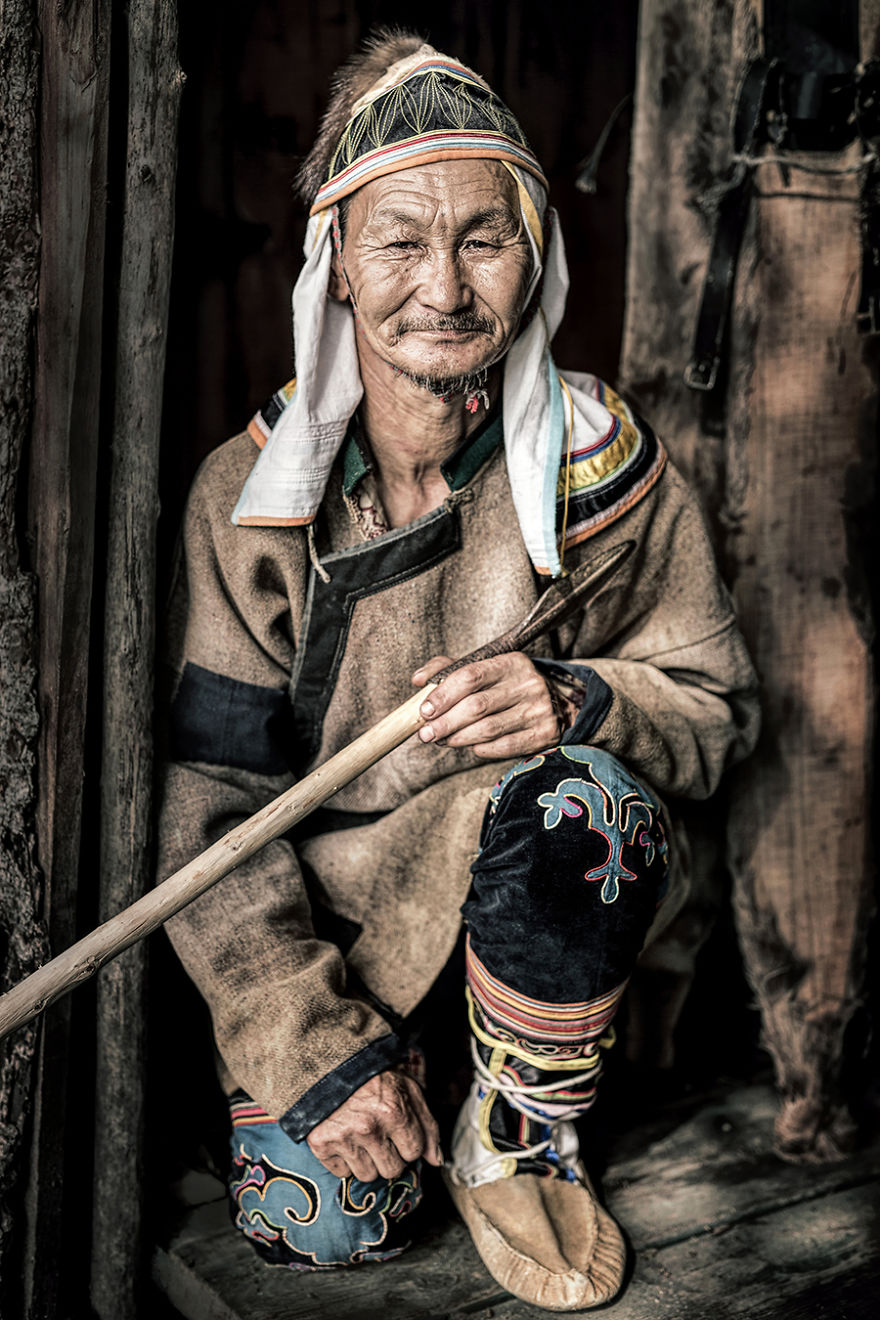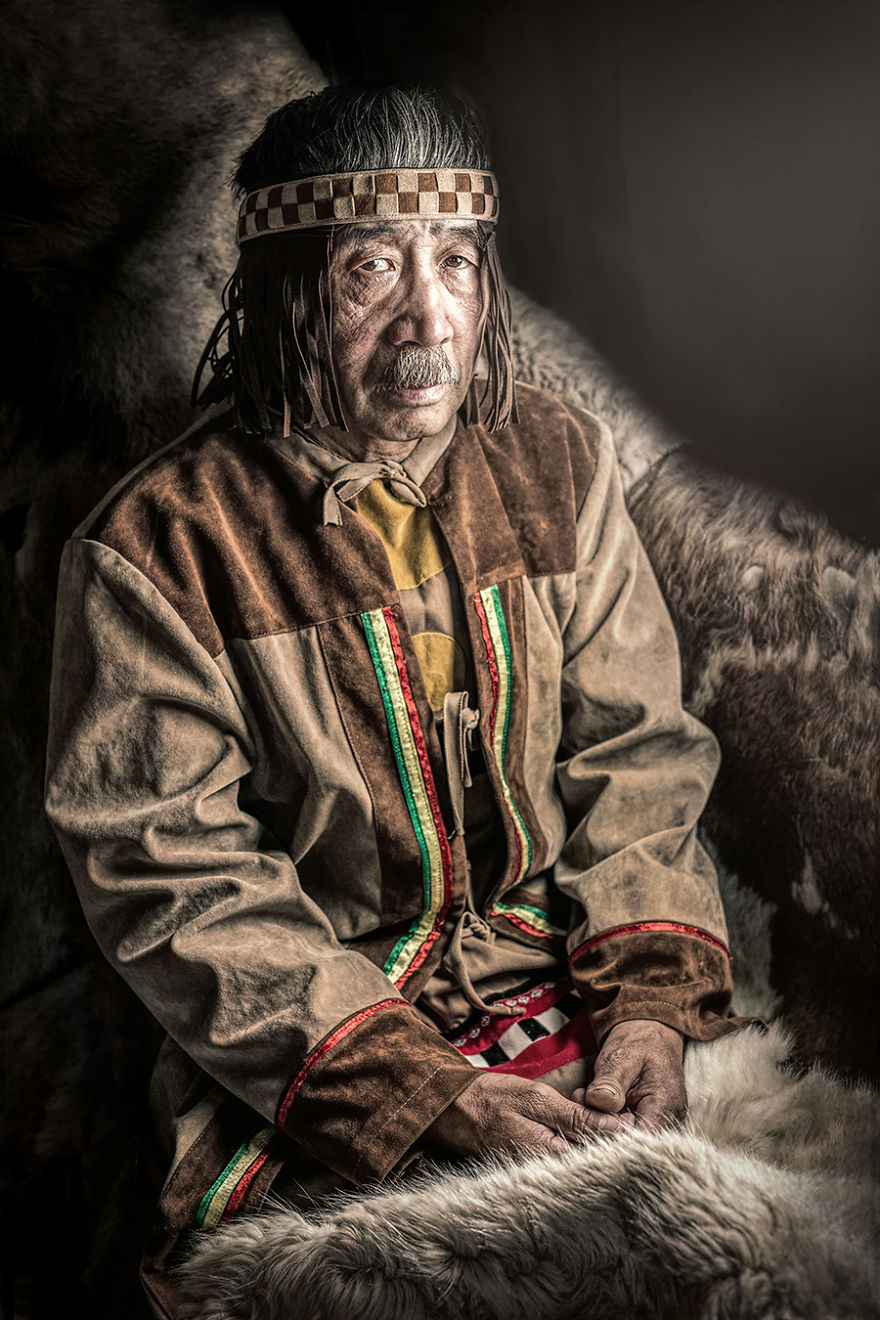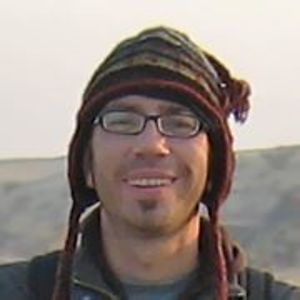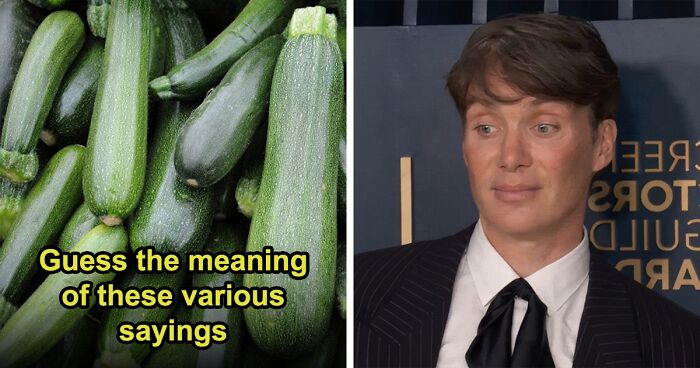
74Kviews
For The Last 10 Years, I‘ve Been Traveling To Inaccessible Corners Of The World And Photographing Indigenous People (30 Pics)
Hi, my name is Alexander Khimushin. I am a traveling photographer born and raised in Sakha (Yakutia) - the coldest region of the world and one of the most isolated regions of Siberia. 10 years ago, I packed a backpack and set out on a journey that continues to this day, traveling alone to the most remote and inaccessible corners of the world. Visiting Indigenous People and learning about their cultures and traditional ways of living has become the most inspiring experience of my life. The last several years I dedicated to The World In Faces photo project that showcases the incredible diversity of our multicultural world through photo portraits and personal stories of Indigenous People.
Due to rapid globalization, destruction of traditional environments, and conflicts on racial and religious grounds, many ethnic minorities today are going towards total extinction. Their ancestral knowledge, traditions, and languages are rapidly disappearing. The United Nations has officially declared 2019 the Year of Indigenous Languages. Language is a core in every traditional culture of the world, however, most of the Indigenous languages are under threat. According to the official forecasts, 50-95% of the languages of the world will disappear by the end of this century. One Indigenous people's language dies every two weeks.
I made it my mission to tell the world about these unique people and their ancient cultures, to share their wisdom, show their faces, and tell their stories. I hope my photo project will be a call to action to acknowledge and protect the ways and rights of Indigenous People, and raise global awareness about these peoples’ struggles, worldviews, and their resilience.
A large scale The World In Faces photo exhibition was recently held at the United Nations Headquarters in New York City. I was especially proud to show it during the time when over 1500 representatives of Indigenous Peoples of all over the world gathered together in their Forum; they were very happy to see portraits of their brothers and sisters from different countries. I thought it would be a good idea to share the portraits from this exhibition with you too!
“People will not look forward to posterity who never look backward to their ancestors.” ― Edmund Burke, Reflections on the Revolution in France.
More info: Facebook | Instagram | khimushin.com
This post may include affiliate links.
Dukha Woman; Darkhad Valley, Khovsgol, Northern Mongolia
The Dukha people live in one of the most remote and inaccessible Mongolian taiga forests bordering the Tyva Republic in Siberia. They are the only Indigenous reindeer herders of Mongolia. Ulzii Sandag, 80, is one of only 282 Dukha people. If we count her 14 children, more than 60 grandchildren and a large number of great-grandchildren, the total number of which she could not recall, it can be said that Ulzii is the progenitor of more than half of the Dukha people. In Ulzii’s opinion, the most important trait of a human character is humanity, "I wish all people of the world to live in peace and harmony!"
Bodi Woman; Mago River, Debub Omo, Southern Nations Region, Ethiopia
Bodi people live in one of the most remote areas of South East Ethiopia along the Mago river. Bodi tribes are dependent on their livestock. There are more than 80 synonyms in their language describing their animals, differentiating them down to the smallest details in their color and physical appearance. Traditional foods consist of animal blood that is collected and stored and milk porridge. Scarification is widespread among both men and women and is intended to demonstrate both beauty and courage.
Sepik Papuan Girl; Ambunti, East Sepik River, Papua New Guinea
The East Sepik river serves as the only ‘road’ into many Sepik villages, with little to no infrastructure, including electricity, shops or other amenities. This isolation has helped preserve the East Sepik culture for generations. However, there are fears that their remote paradise will soon be destroyed by mining. There are development plans to introduce a new gold and copper mine along the East Sepik. It is estimated that this area is one of the largest undeveloped copper-gold deposits in the world, but the risk of ecological catastrophe as a result of its exploitation may outweigh the possible benefits to the East Sepik peoples.
The pure happiness of a child, when having a pet (may it be a crocodile), reflecting in her eyes, is heart warming. This picture shows how we are all different and similar in the mean time. 😊
Mongolian Kazakh Man; Targyn, Bayan-Ölgii, Western Mongolia
Sailau Jaryk, 68, is a berkuchi - an eagle hunter. He has practiced his traditional hunting with a berkut bird for the last 37 years. He hunts on average 3 days a week. Over the last 37 years, Sailau has had 9 birds. While on average, a Mongolian golden eagle’s lifespan is about 25 years, Sailau has never kept a bird for more than 8. He believes they must also live free and always releases his eagle after the time they hunt together. This is his peoples' tradition. While the Kazakh language is widely spoken in neighbouring Kazakhstan, the ancient tradition of eagle hunting is endangered. It only exists today among this small community of Mongolian Kazakhs.
Ixil Girl; Santa Maria Nebaj, El Quiché, Guatemala
Joselin Pamela Valdez and her family live in the Cuchumatan mountains of the Guatemalan Highlands. Due to its remoteness, the Ixil Community has largely maintained its traditional culture. Most women are weavers making the handmade traditional clothing that the Ixil women proudly wear in everyday life. Ixil are among the Indigenous Peoples who suffered horrific atrocities during the 36-year Guatemalan civil war which ended in 1996. In 2012, Rios Montt, ex-president of Guatemala, was found guilty of the massacre of 1,771 Ixil People, however, after an appeal which dismissed the conviction and before the second trial’s final verdict, he died in 2018.
Even Girl; Sakha (Yakutia) Republic, North East Siberia
Evens are a Siberian Indigenous People of Manchu-Tungus origin. Evens have a rich oral history, and have been living in this part of the world since the 1st millennium AD. Their language is spoken by communities of reindeer herders, scattered for thousands miles across the coldest and most isolated regions of Siberia. With only some 5,700 speakers the Even language is considered severely endangered.
Ulchi Girl; Amur River, Far East Of Siberia
In a school in her native Bulava village, Anastasia Kuchekta, 8, learns her people’s language, dances and embroidery. She helps her mother engrave birch bark and process fish skin. The Ulchi are one of eight groups of Indigenous People living along the 1,740 mi/2,800 km long Amur river in the Far East of Siberia. Fishing is their primary livelihood. The Ulchi are a very small Indigenous group living in just 2 villages, yet they have managed to preserve their traditions and national clothing. However, the UN ranks the Ulchi language as critically endangered.
Negidal Woman; Amgun River, Far East Of Siberia
Negidal people live in a remote village on the Amgun river, accessible only by boat and surrounded by hundreds of miles of dense taiga forest. The art of making traditional clothing like these in the photo has been lost. The Negidal language today is only spoken by two local elderly women. They fear the language, identified as critically endangered by UNESCO, and the core traditions and culture of the Negidal will die with them.
Aboriginal Man; Pormpuraaw, Gulf Of Carpentaria, Cape York, Australia
Cape York Peninsula is one of a few remaining places in the country with a significant population of Australian Aboriginals. When the first British settlers arrived, Australia had been inhabited by Aboriginals for more than 50,000 years. 231 years later, although the population of Australia is over 24 million, only 2.8% of them are Indigenous.
Papuan Woman; Tambul, Eastern Highlands Of Papua New Guinea
Kuku lives in Lagaim Village, Tambul District, in the Eastern Highlands province of Papua New Guinea. In this photo, she has just applied her traditional makeup made from local organic material. She is participating in a sing-sing, which is a gathering between a few villages to peacefully exchange traditions. Each village has its own lineage, face-painting style and dance. A sing-sing is a big event celebrated once a year or on a special occasion. With over 800 Indigenous languages spoken in the country, there is an amazing diversity of people, culture, tradition and oral history. Only 18% of these groups live in urban areas.
Aboriginal Woman; Lockhart River, Cape York, Queensland, Australia
During the period of 1905-1969, the Australian government authorities and police were given the power to transfer Aboriginal children to foster care, forcibly removing them from their families. The children who were taken were assimilated to Anglo-Australian culture. It is estimated that about 100,000 children in total, or just about every third Aboriginal person at that time, was forcibly removed from their families.
I did not know about that. How can any modern government approve of 100,000 children being ripped from their homes. For what reason?! Was it their attempt at integration? Or did they think their original familied wouldn’t be ‚good enough‘?
Buryat Woman; Baikal Lake, Buryatia Republic, South East Siberia
The Buryats are the largest indigenous group in Siberia, mainly concentrated in their homeland, the Buryat Republic. They also live in Mongolia and China, where they are an ethnic minority. Even though the total population of Buryats is close to half a million people, they comprise only about 26% of the population in their own republic. Only approximately half of them can speak the Buryat language today. UNESCO recognized their language as severely endangered.
Khik Woman; Wakhan Valley, Badakhshan, Afghanistan
Living in the valley between two of the world’s highest mountain ranges, the Khik people are practically cut off from the rest of the world. Donkeys are used as the main mode of transportation. Khiks are traditionally a nomadic people, depending on their herds of yaks for survival. However, now many of them have settled in clay houses along the river Panj where they practice agriculture. Due to their extreme isolation their traditions and culture, including their everyday clothing have remained intact.
This woman has eyes just the colour of my Nan. I bet she's seen some incredible things too
Tz'utujil Woman; Lake Atitlán, Guatemalan Highlands, Guatemala
Tz'utujil are one of the Maya Indigenous groups in the Americas. They are noted for their continuing adherence to traditional cultural and religious practices through their arts and crafts. Tz'utujil artisans are globally recognized for their traditional dyeing of thread from plants that are grown locally. Tz’utujil women present their unique style and identity through their clothing. A distinctive headdress is a common identifier of the Tz'utujil people.
This lady looks like she is a fun soul. Something in her eyes has a fun and youthful look.
Soyot Man; Oka River, Buryatia Republic, South East Siberia
Soyot people live in one of the most remote areas along the Russia/Mongolia border, hunting, fishing and grazing their yaks. There are just a couple of dozen people whose parents are both Soyot. Soyot identity is contested due to intermarriages with Buryat people. The Soyot language is extinct and very little of their culture remains today. This is Vladimir Rabdanovich Baldanov, 81, one of the last Soyots in the world.
Hamar Woman; Turmi, Debub Omo, South West Ethiopia
A married Hamar woman (which is indicated by her top necklace) is pictured here during her visit to a weekly market at Turmi village to exchange local produce. The Hamar people are pastoralists, primarily dependent on their livestock (cattle). They celebrate a rich culture and traditions which focus on cattle. There are approximately 42,838 Hamar language speakers, and 42,448 self-identified Hamar people. They represent approximately 0.05% of Ethiopia’s population.
Huli Man; Tari, Hela Province, Papua New Guinea
The Huli people have many vibrant and unique traditions - one, the making of wigs using their own hair, is presented in this photo. When boys enter puberty, they live separately from the female members of their clan for about a year. During this initiation, young men live under the direct guidance of male elders, growing their hair and, in the end, get it cut by a traditional wig making master. The wigs, decorated with feathers, are later used for ceremonies throughout the man’s lifetime.
Afar Woman; Danakil Depression, North-East Ethiopia
The Afar are Indigenous People located in the Afar Triangle at the Horn of Africa. It is the lowest point of the continent well below sea level. Affected by constant drought, it is also considered the hottest place on Earth. A skeleton found here in 1994 has been dated to 4.2 million years old. Paleontologists believe the Afar region is the cradle of humanity. The Afar people may well be the descendants of the first humans living on this planet.
Papuan Girl; Massy, Western Highlands Of Papua New Guinea
Laftadio Kupayna, along with a group of other children from Massy village, takes part in a big sing-sing ceremony on the day of this photo. Her mother applied the traditional paint on her face and dressed her in their traditional clothing. Only the Massy decorate themselves in this distinctive way. A sing-sing is a gathering of a few villages to peacefully share traditions. Each village has its own face-painting style and dance. It is a major annual celebration, although they are sometimes called for special events.
Sakha Shaman; Lena River, Sakha (Yakutia) Republic, North East Siberia
The Sakha people live in the world’s coldest region with winter temperatures often dipping below -96F/-71C. They speak Sakha - a Turkic language, despite Turkey being more than 7,000 mi/11300 km away from the Sakha Republic. There are less than 1 million people, spread across a region that is approximately ⅓ the size of the United States. Many Sakha people practice their traditional spiritual practices, including shamanism. Although the Sakha Republic has been considered a part of Russia since the 17th century, the Sakha people have preserved their culture and traditions. Approximately 87 percent of them are fluent in their native language.
Orochi Woman; Coast Of The Sea Of Japan, Far East Siberia
The Orochi are Indigenous people living on the shores of the Sea of Japan, Far East of Siberia, just north of Japan. Ina Akunka was a spiritual leader who dedicated her life to preserve Orochi traditions and culture. Here she is pictured wearing the last traditional clothing made from salmon skin by a traditional master craftsman. That master is no longer with us, and their traditional knowledge died with them. The last person who could speak the Orochi language died 9 years ago. Ina, 64, passed away last year. She was one of the last of the Orochi people.
Nganasan Boy; Dudinka, Taimyr Peninsula, Arctic Siberia
The Nganasan people of the Siberian Arctic are the northernmost people of Eurasia. There are just a few hundred Nganasans today. Their language is severely endangered according to UNESCO. There are only a few elders who can speak Nganasan fluently. Here a local boy, Venya, 15, is wearing authentic traditional clothes. These clothes are becoming exceptionally rare. The few remaining pieces like this one will be buried together with their owners, according to the Nganasan ancient funeral traditions. Once these are gone, there will be just a couple of costumes left as museum pieces.
Dolgan Man; Dudinka, Taimyr Peninsula, Arctic Siberia
Dolgan people are the Northernmost people of Eurasia, living on the edge of the Arctic Ocean. Dima Chuprin, 35, is a highly regarded traditional bone carver, working with both mammoth and reindeer bone. Dolgans are reindeer herders living an isolated life in one of the harshest climates on earth. An estimated 1,000 Dolgans of the approximately 8,000 remaining speak their language.
Nenets Man; Tukhard, Taimyr Peninsula, Arctic Siberia
Pavel Nikiforoff, 36, has a lot of responsibilities - he is the head of the administration of one of the most remote and northernmost settlements of Eurasia and of the world - the village of Tukhard. Until recently, Pavel had a herd of reindeer, but when the local residents elected him as a village Chief, he had to make a difficult choice. Leadership is a huge responsibility. Life in the tundra is harsh, with temperatures below -40 F/ -40 C, but for Pavel it is his homeland and his people's land. He doesn't dream of any other life.
Oroqen Man; Alihe, Inner Mongolia Province, People’s Republic Of China
The Oroqen people live in a remote part of the Inner Mongolia Province in China, along the border with Siberia. The Oroqen language is not written until now; it is considered severely endangered. Traditionally Oroqens are hunters, however, most of them have transitioned to other occupations to adhere to the new wildlife protection laws passed in China. The government has provided support and modern dwellings for those who are integrating and have left behind their traditional way of life.
I wish there was a simple solution To All, to preserve old languages and traditions, but be able to keep up with this fast paced changing world...
Mam Man; Todos Santos, Huehuetenango, Guatemala
The Indigenous Peoples of Guatemala celebrate their unique embroidery style and color scheme, especially in women’s clothing. For the Mam, men also have their own style expressing their culture and identity. This clothing isn't a costume for a special occasion, most Mam men in the Todos Santos Cuchumatan area wear the same hat and jacket on a daily basis.
Kaqchikel Man; Los Encuentros, Solola, Guatemala
One of the key members of a cofradia - a unique form of brotherhood that is common throughout the region among the Maya Peoples. The process of becoming a member of a cofradia involves many steps and has traditionally been a way for a person to demonstrate their worth to the community. The Kaqchikel Maya are one of the 30 ethnic groups of Maya Peoples, 21 of whom live in Guatemala.
Karo Woman; Omo River, South West Ethiopia
The Karo people live on the banks of the Omo River. A deadly scourge of sleeping sickness drastically reduced their population at the end of the 19th century. Now numbering just over 1,500 people, they live in just two villages. The Karo predominantly practice flood cultivation, growing sorghum, maize, and beans. They also fish and breed cattle and goats. The Karo language is critically endangered.
Udege Man; Krasny Yar, Primorie, Far East Of Siberia
Every summer Sergey Sulyandziga, 56, along with other Udege people go hunting for ginseng root. The Udege know how to find it. Ginseng is highly regarded in Chinese medicine, and can be found in the lush Bikin taiga known as the ‘Russian Amazon’. Sergey is a hunter, searching for roe deer and wild boar. Sergey shared memories from his youth, of how a tiger wandered out of the taiga and climbed the fence to rest in Sergeys backyard. Ussuri tigers are sacred for the Udege people, and must be left alone. There are just over 100 speakers of the critically endangered Udege language.
Yukaghir Man; Kolyma River, Sakha Republic, North East Siberia
Makar Kurilov, 60, lives in one of the coldest and most remote areas of the world. He is a hereditary reindeer herder from along the Kolyma river in north-eastern Siberia. Now retired, he composes and sings songs in the Yukaghir language and teaches children Yukaghir songs and dances. There are only approximately 1,500 Yukaghir people. Only around 70 of them claim fluency in their traditional language and it is considered critically endangered by UNESCO.

 Dark Mode
Dark Mode 

 No fees, cancel anytime
No fees, cancel anytime 



